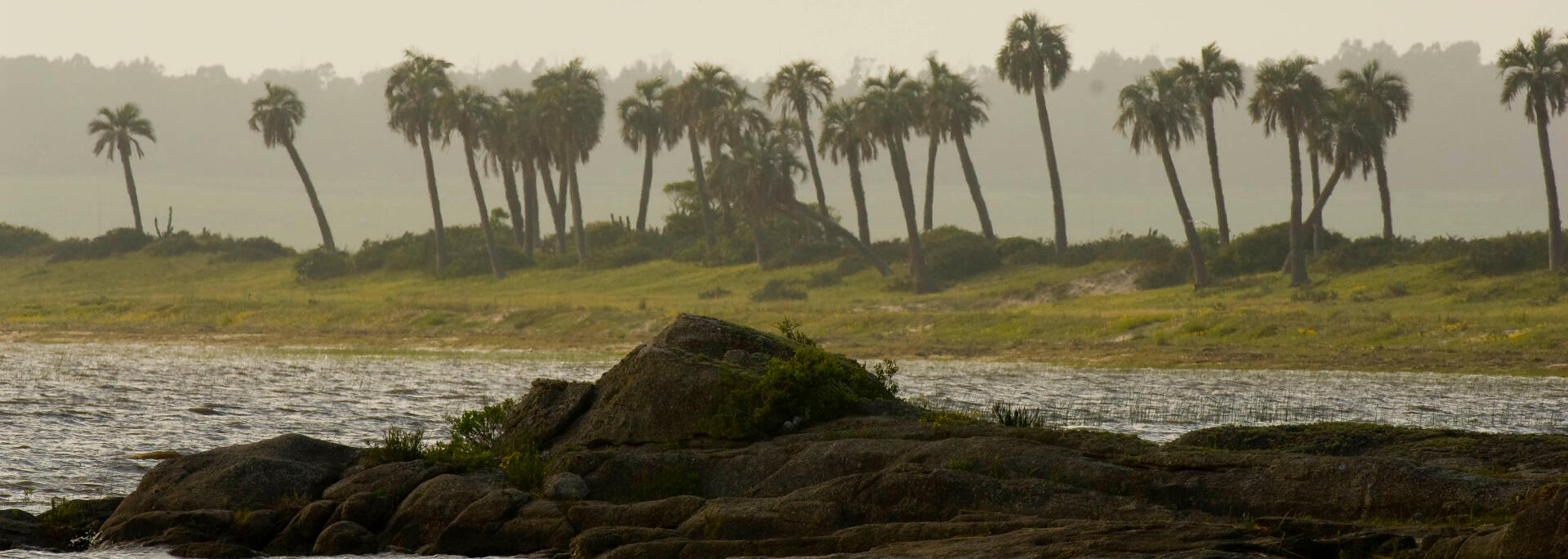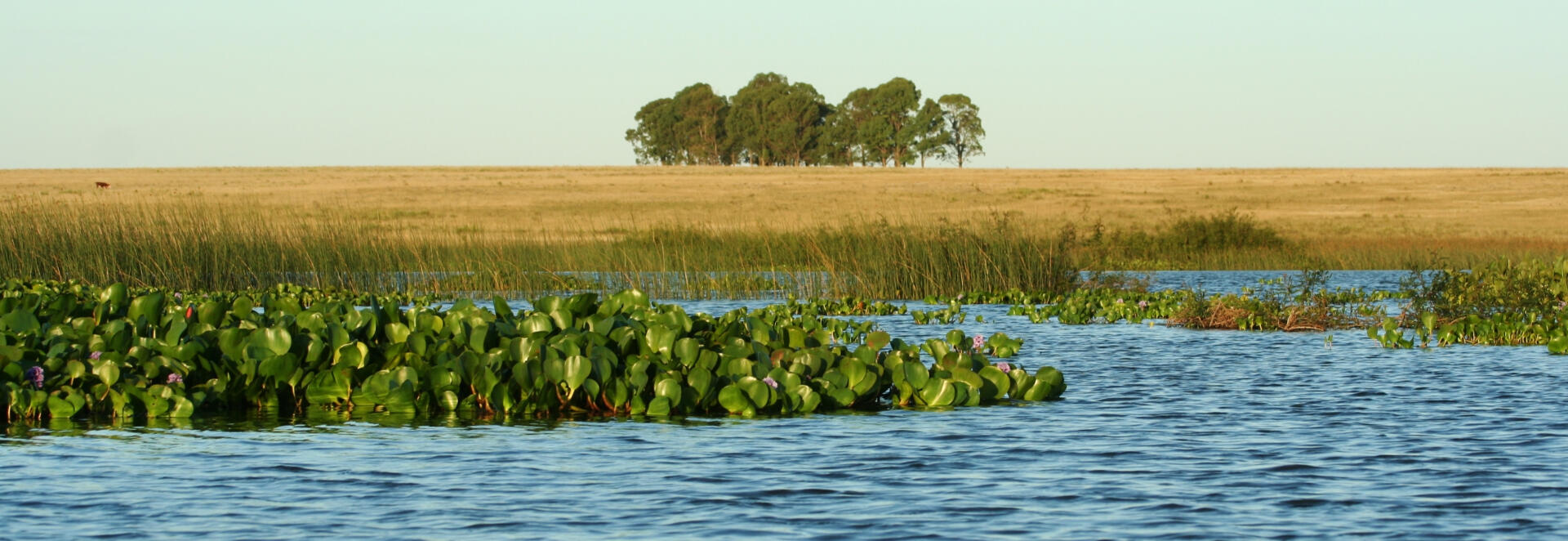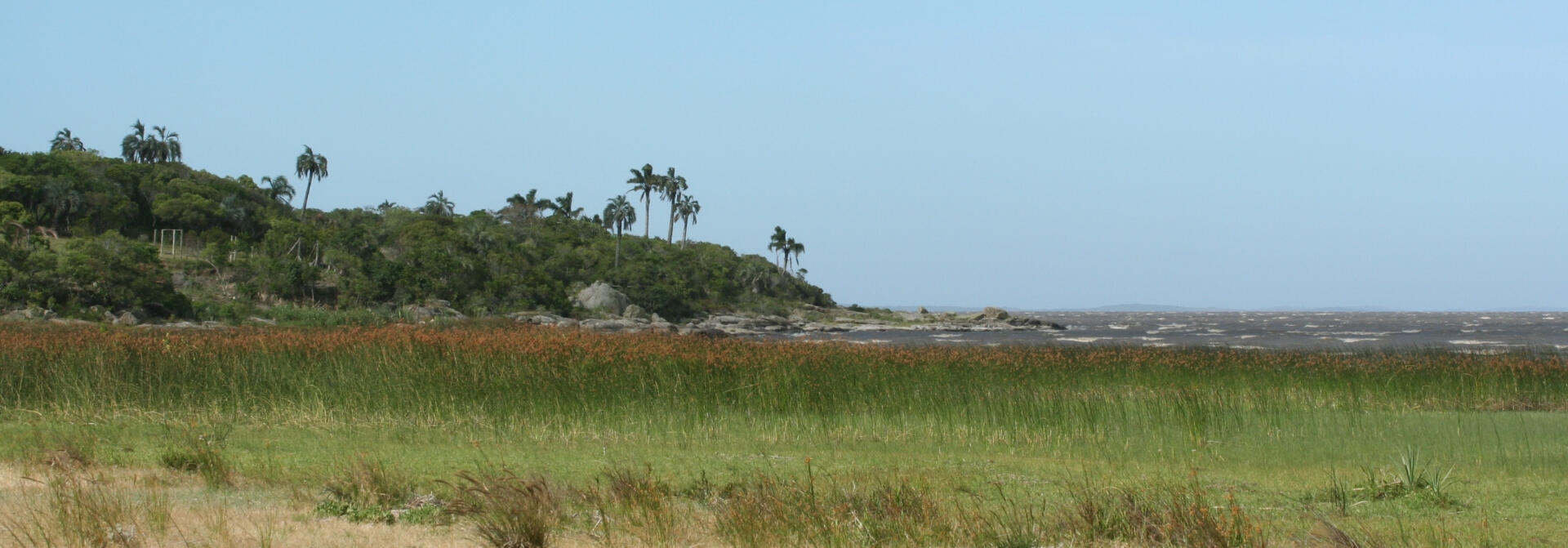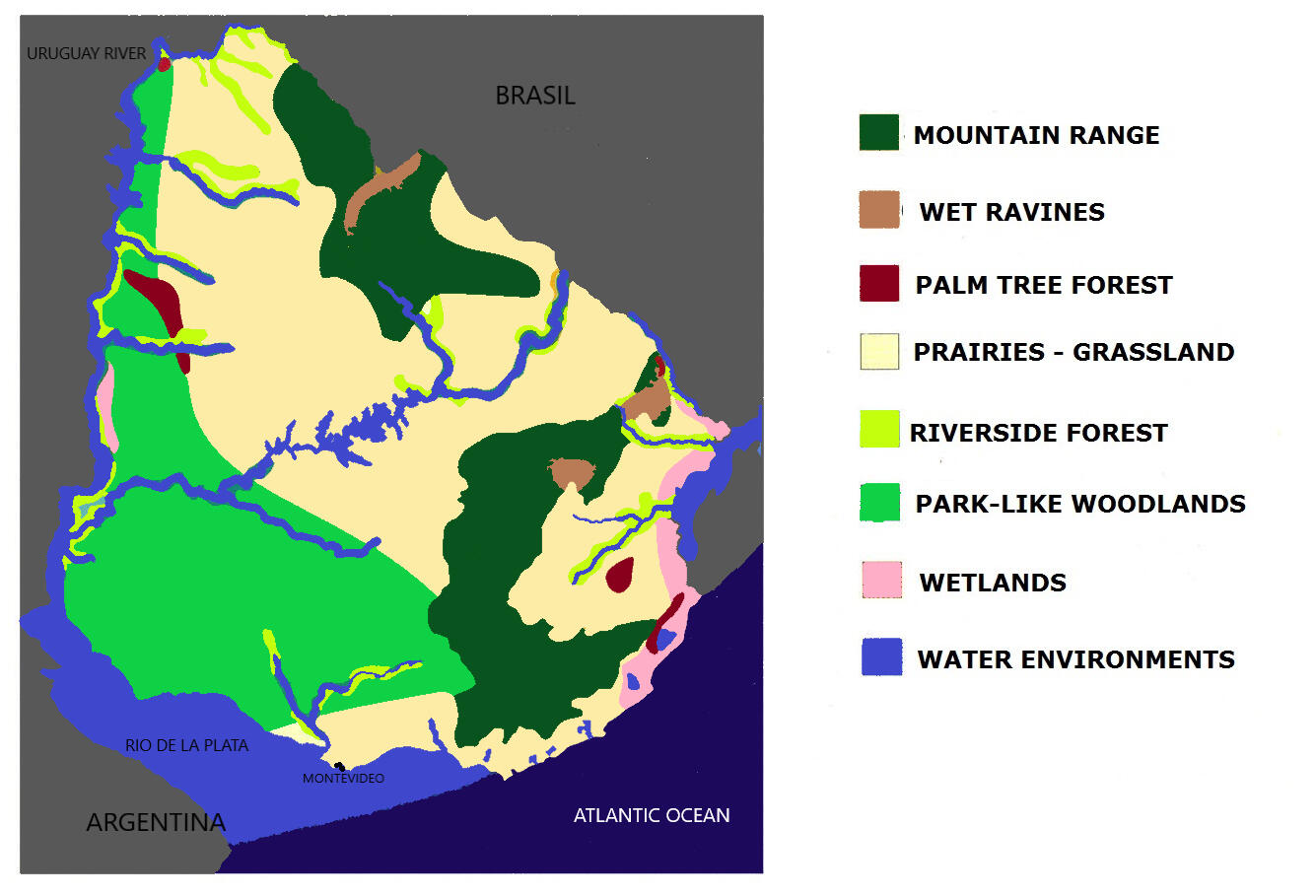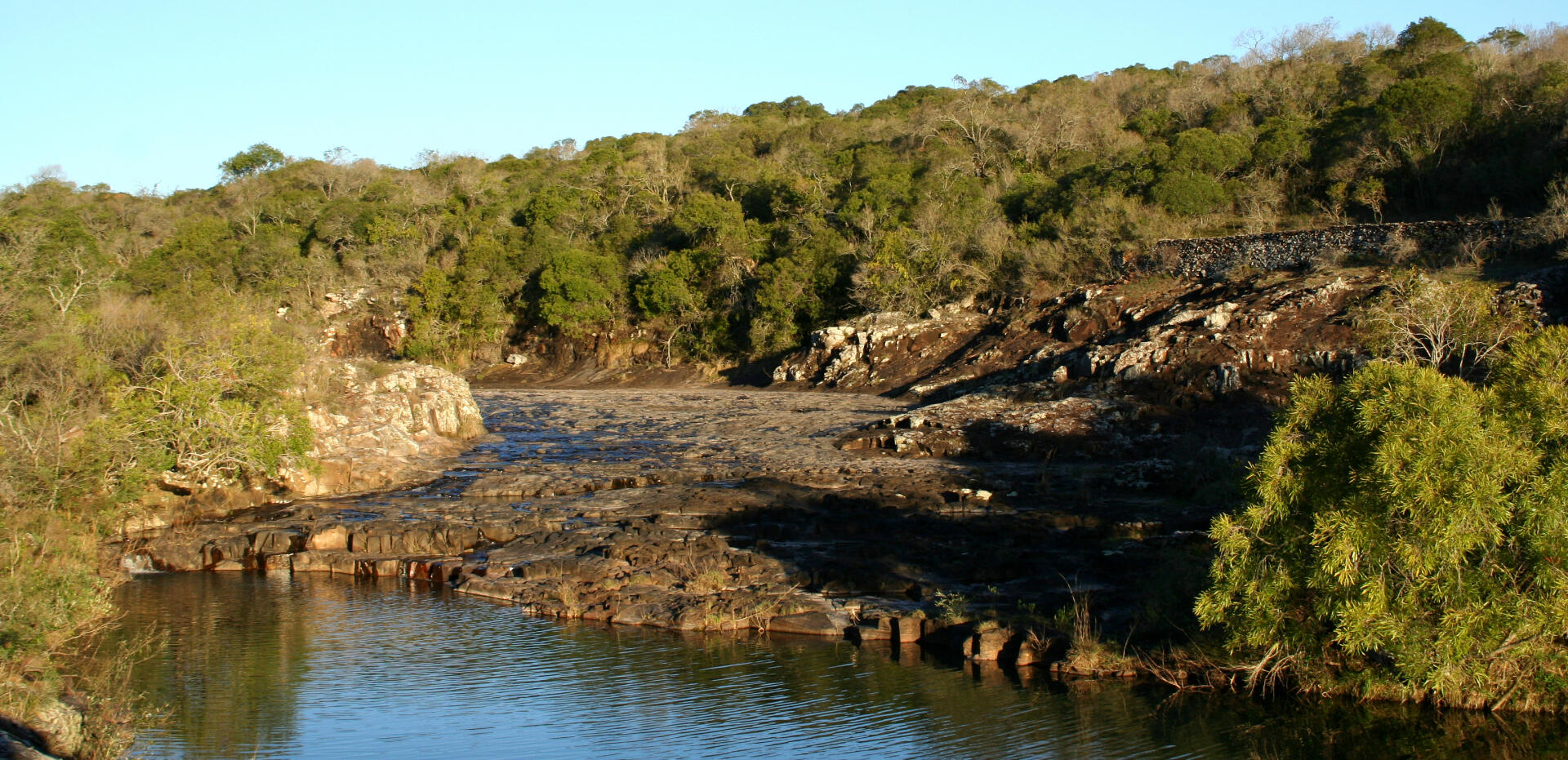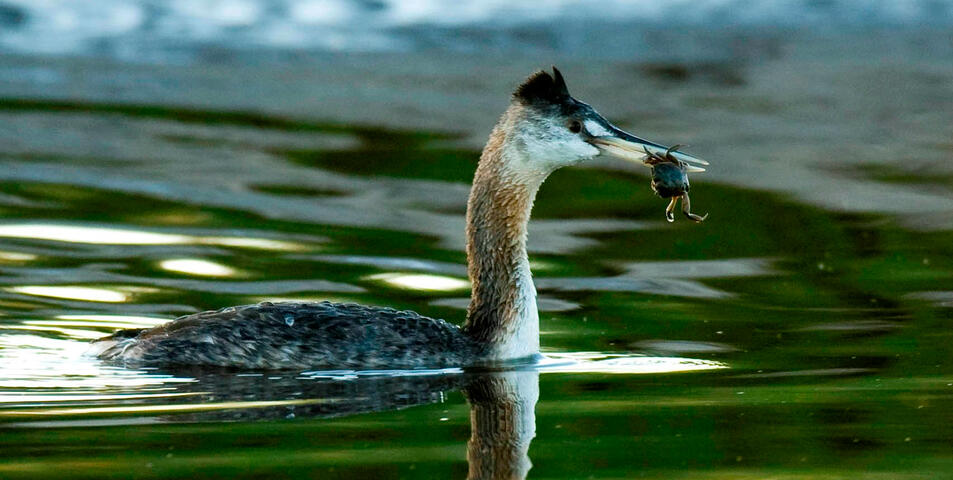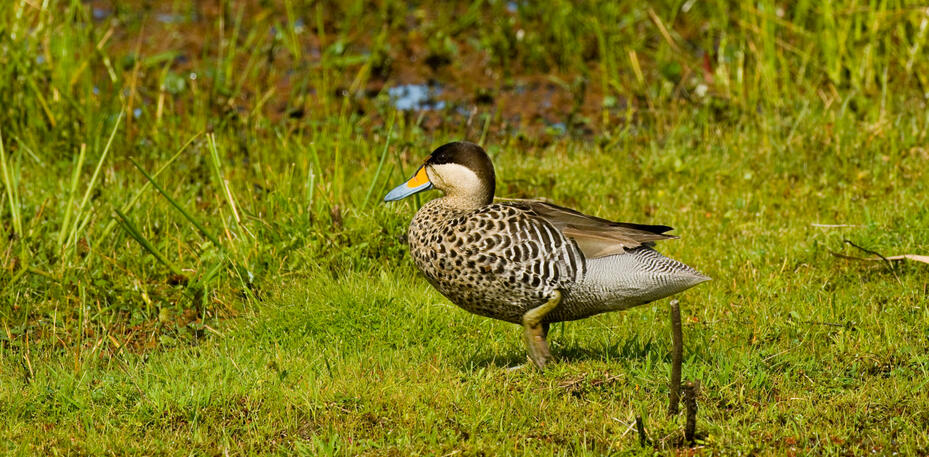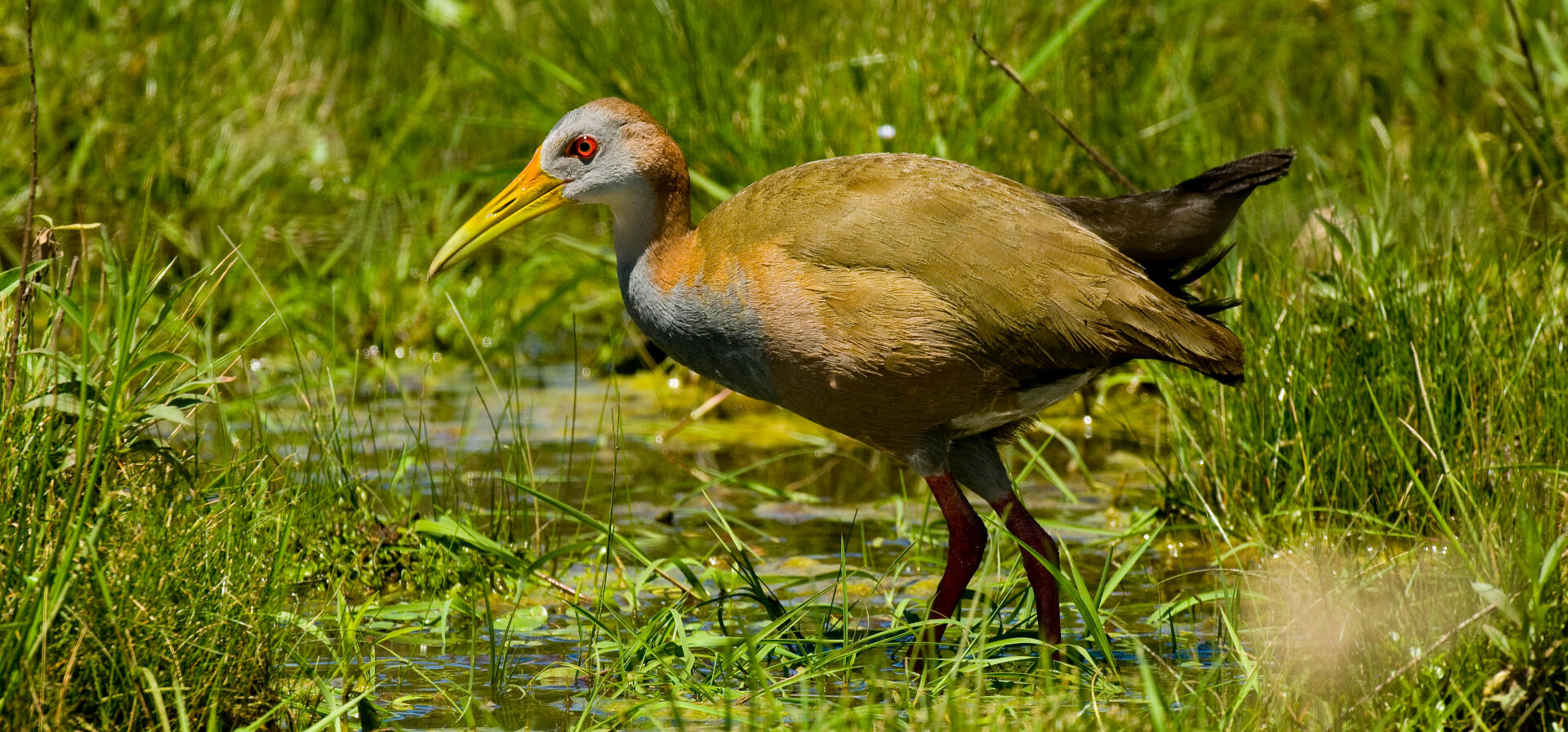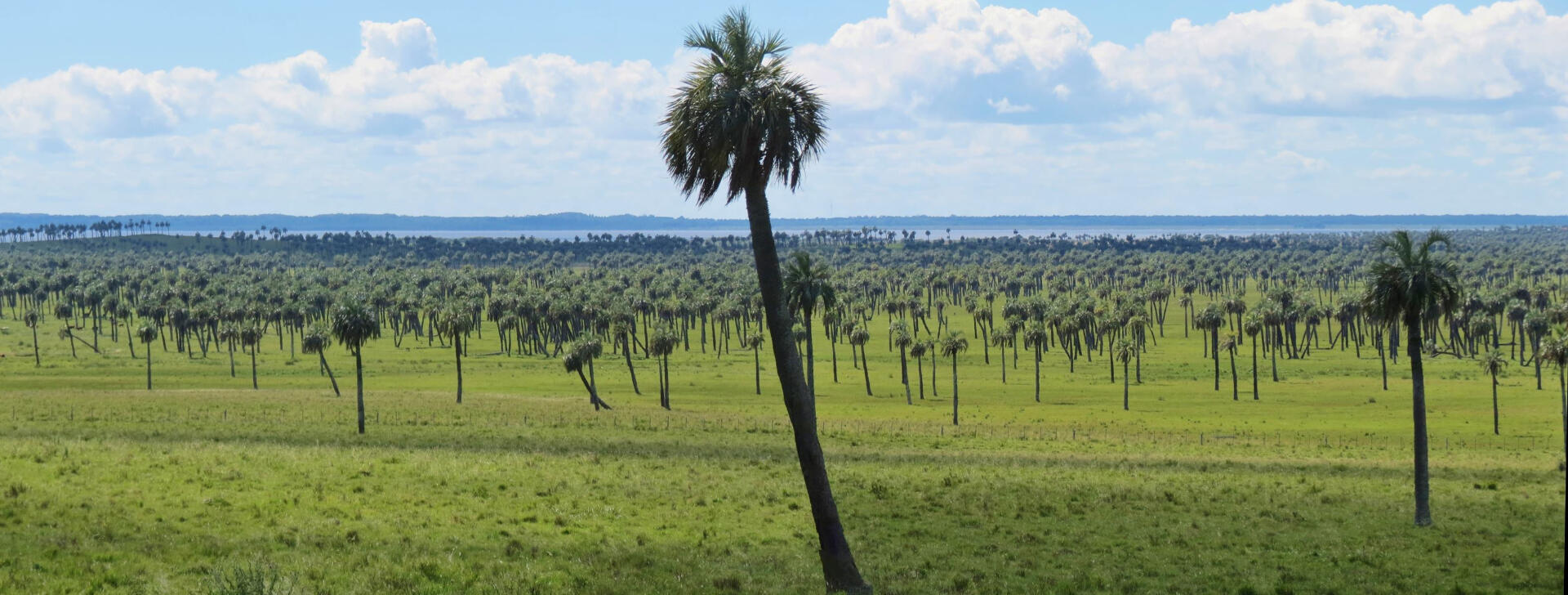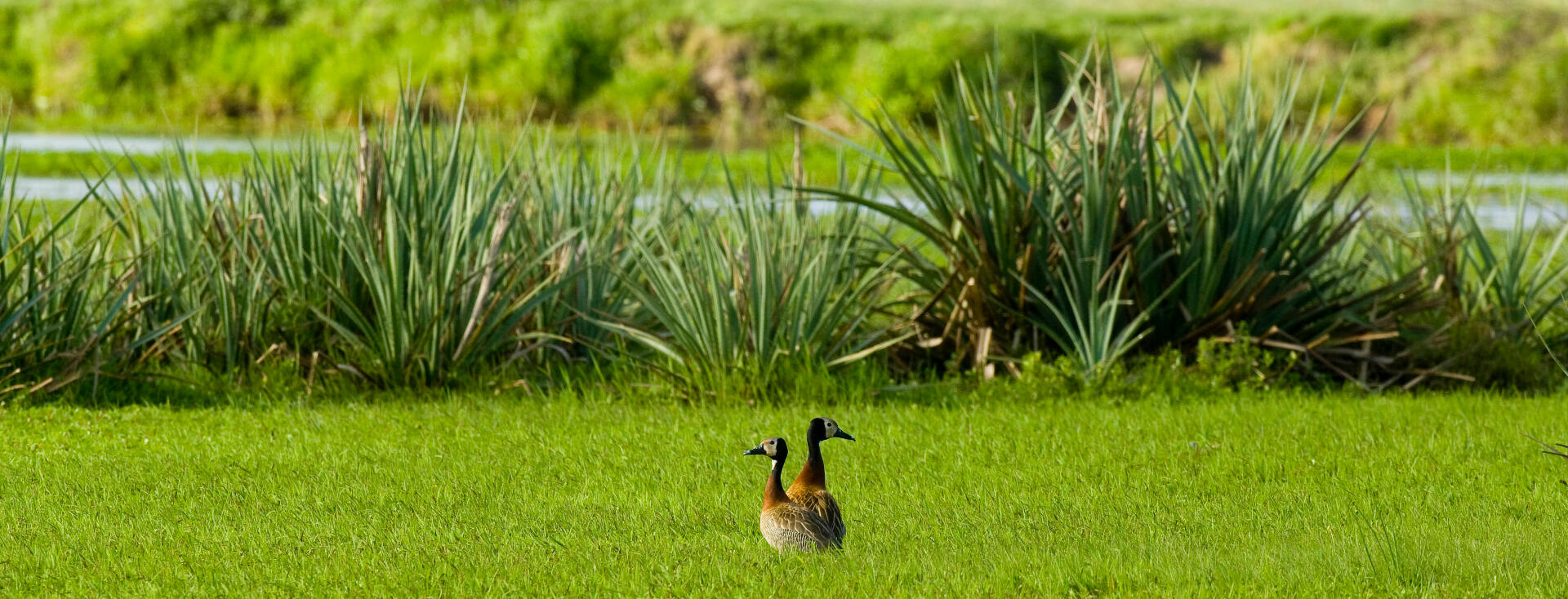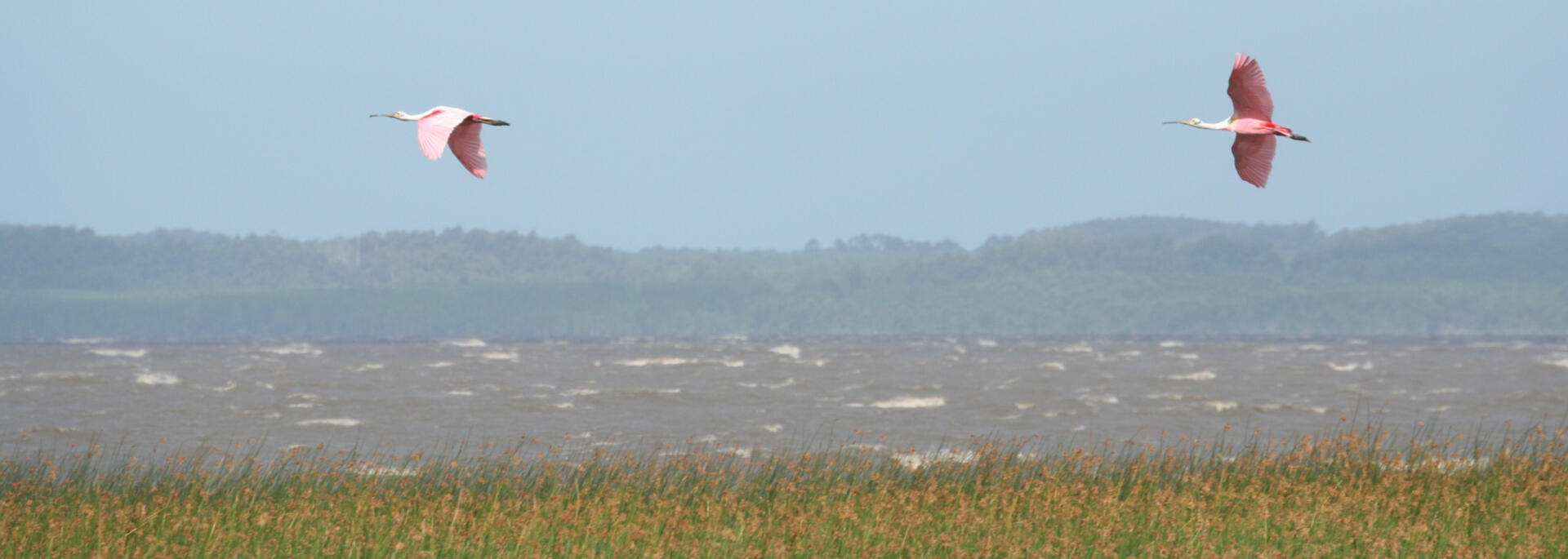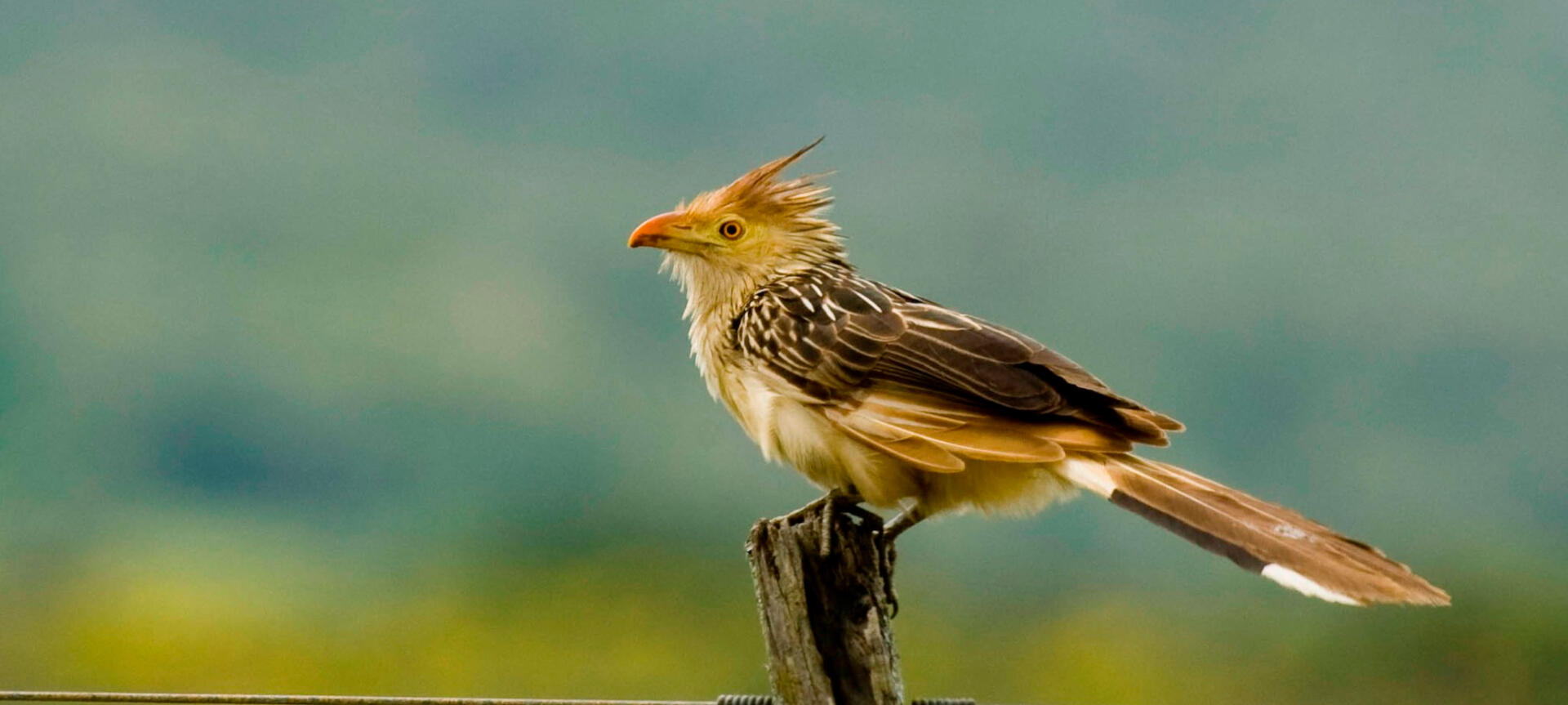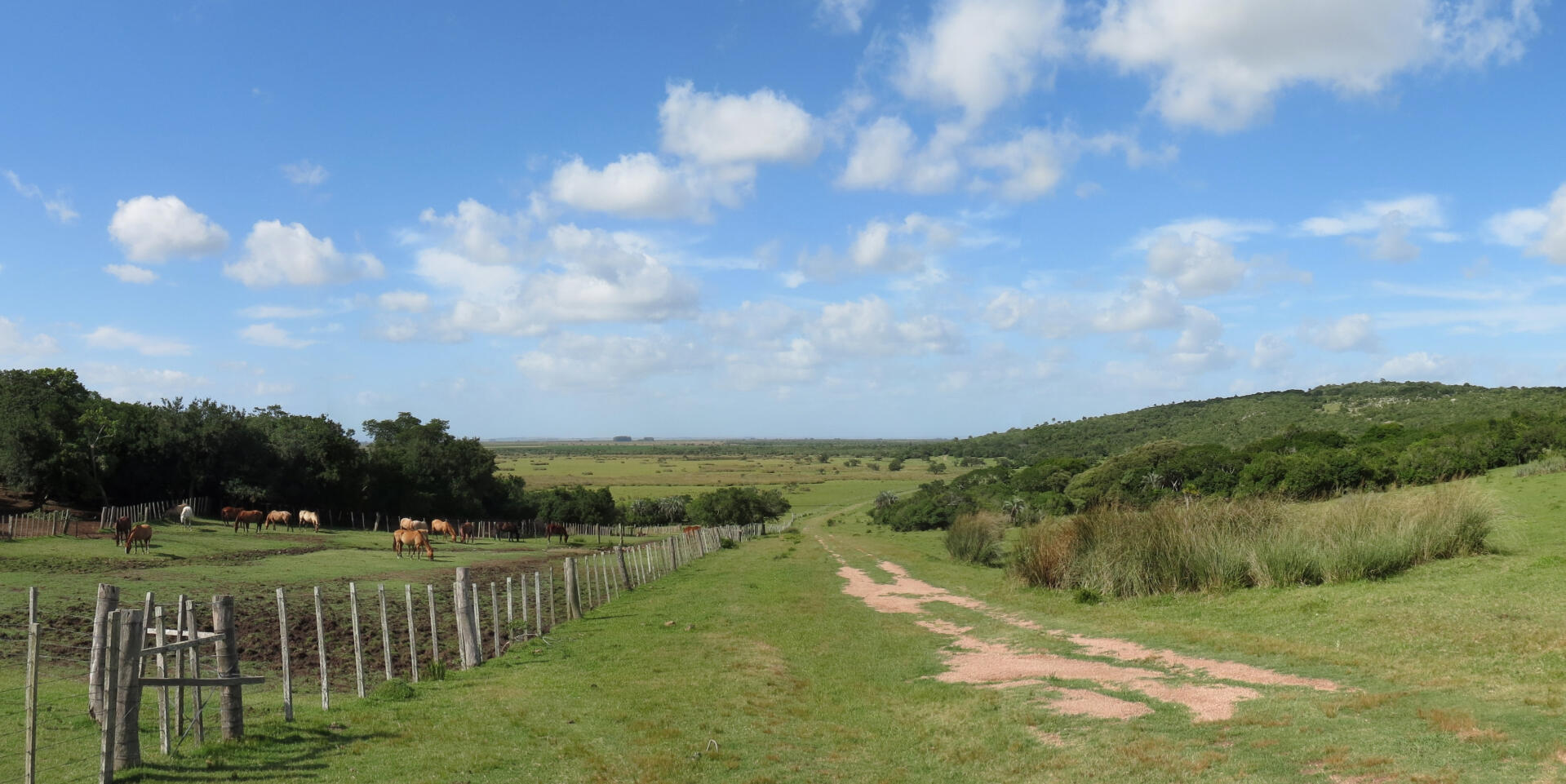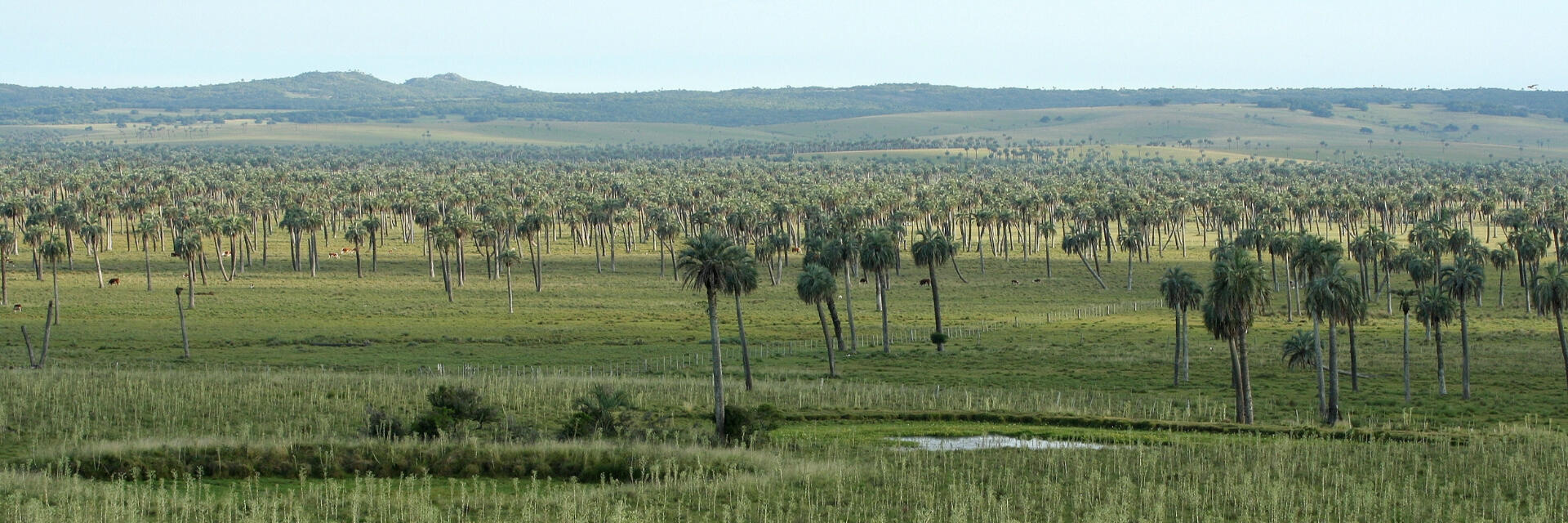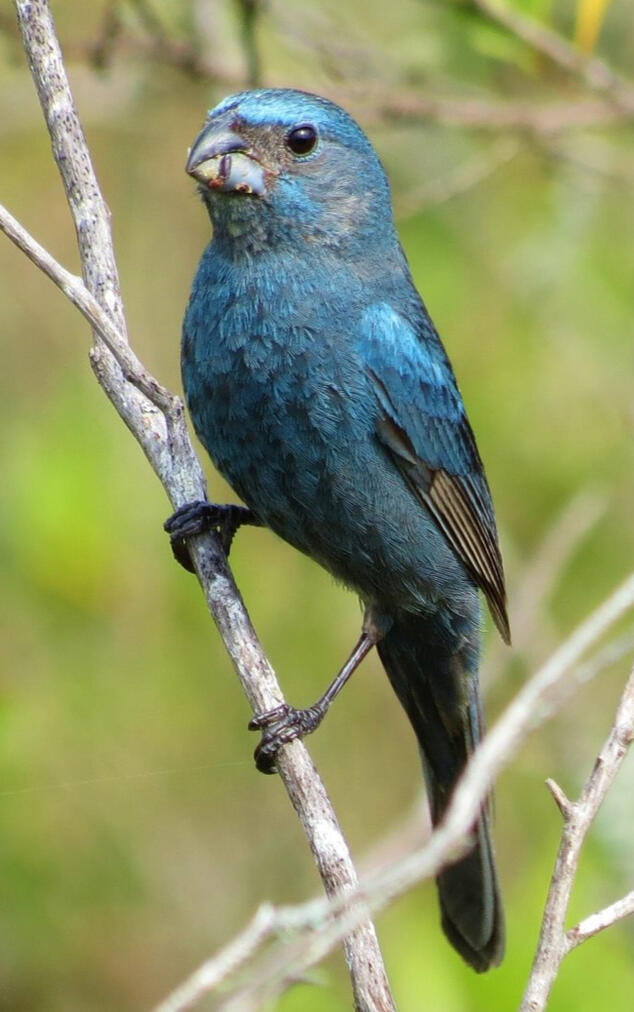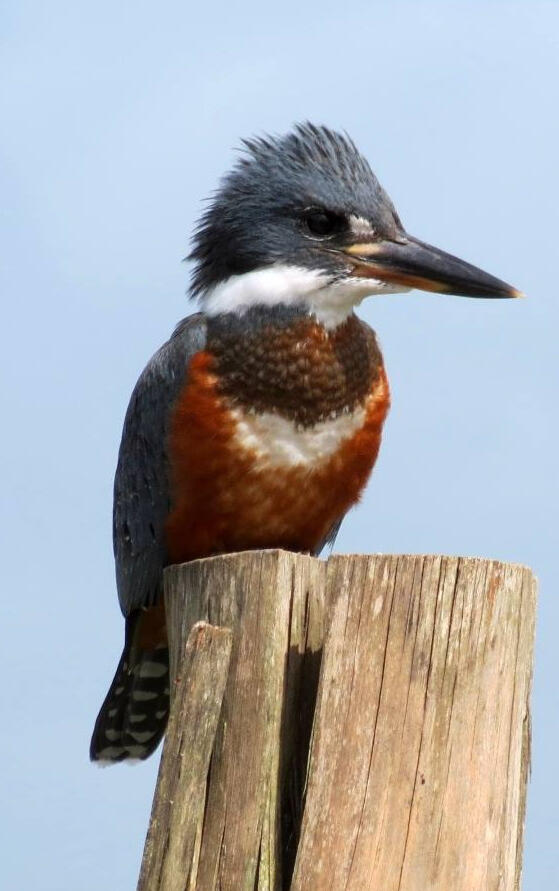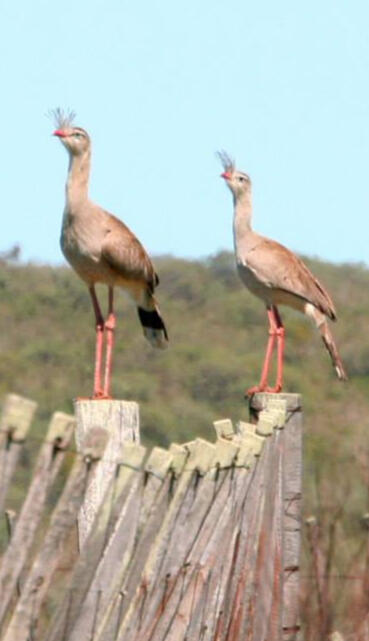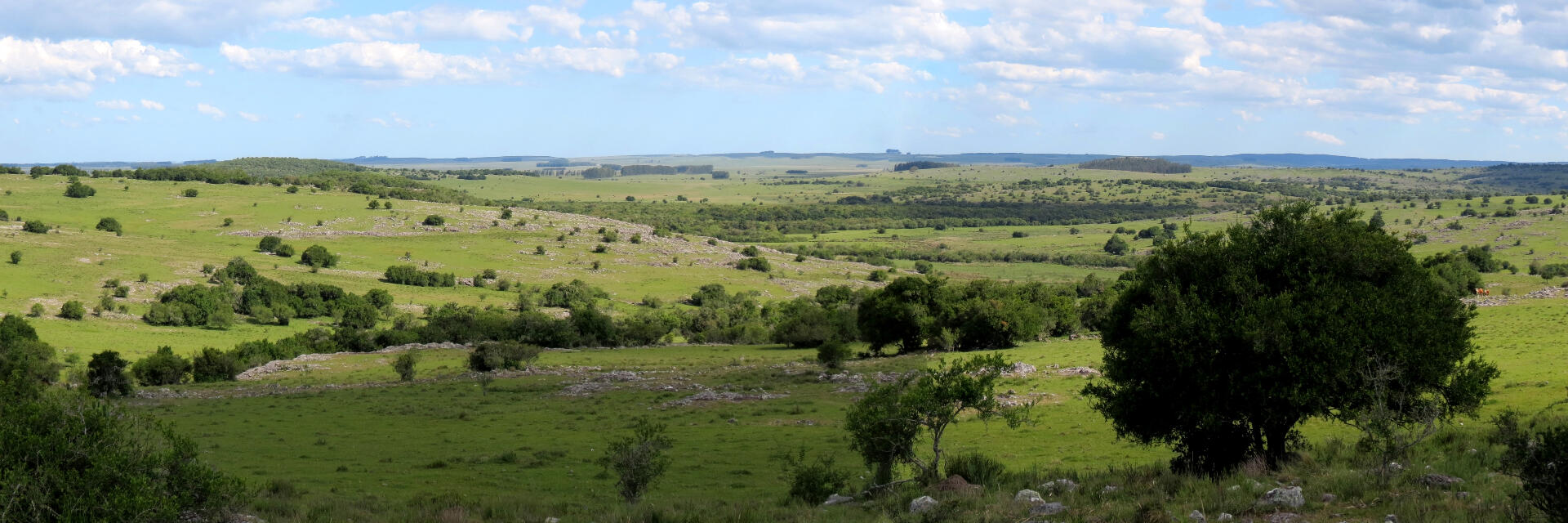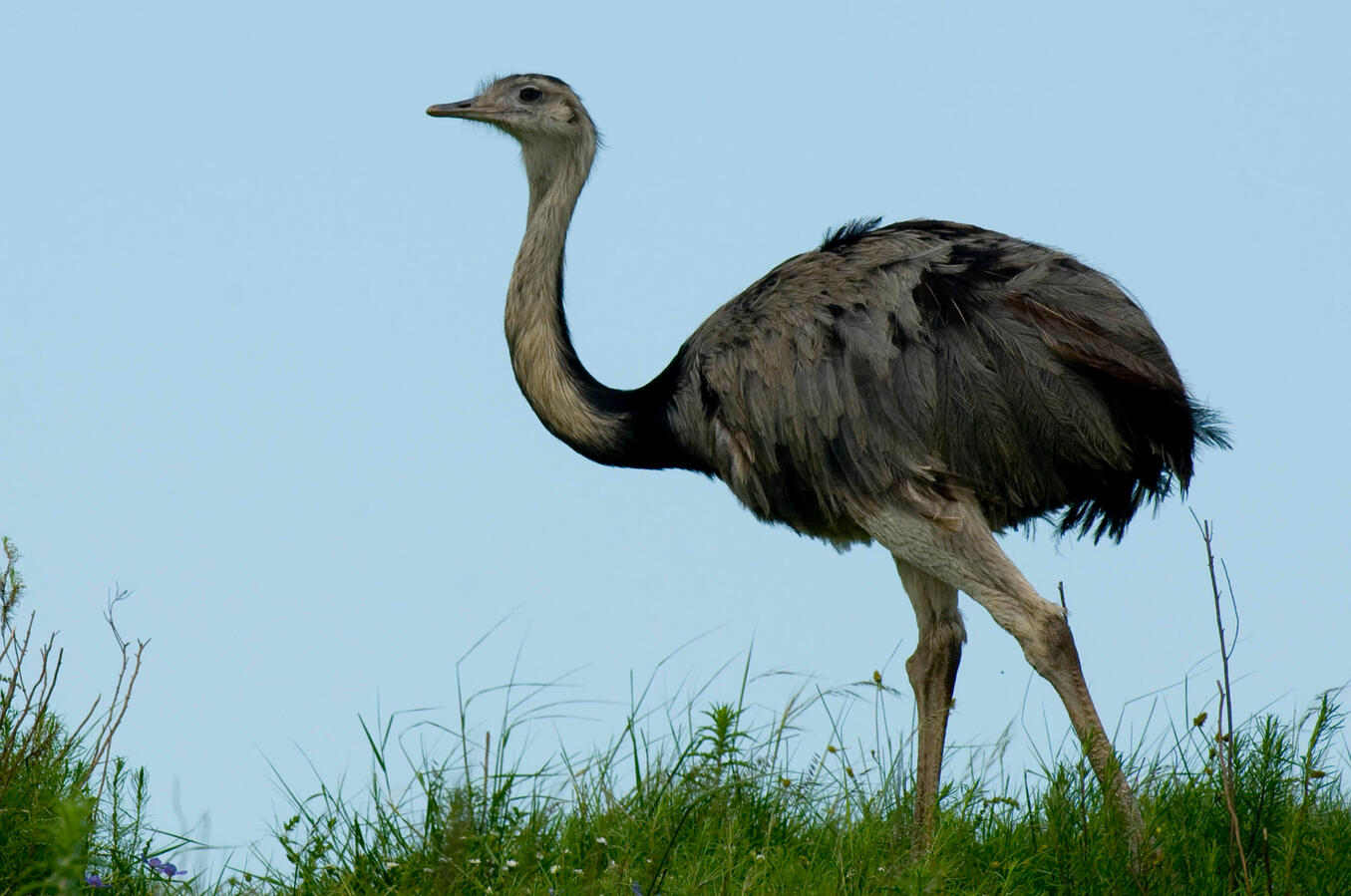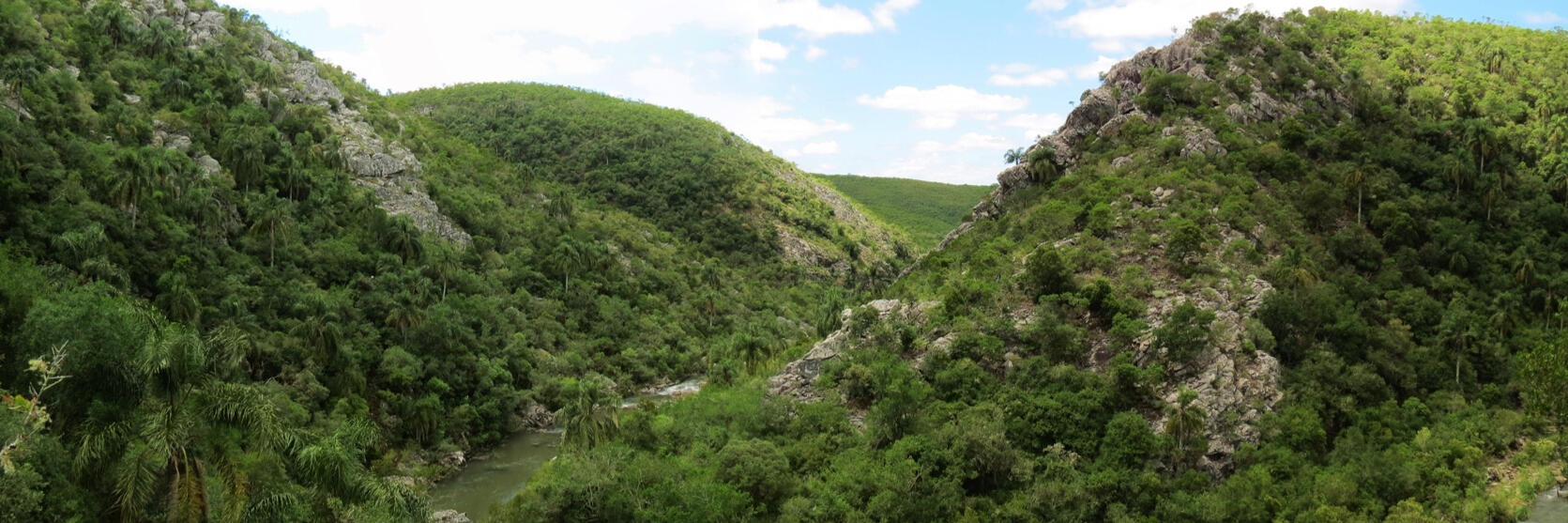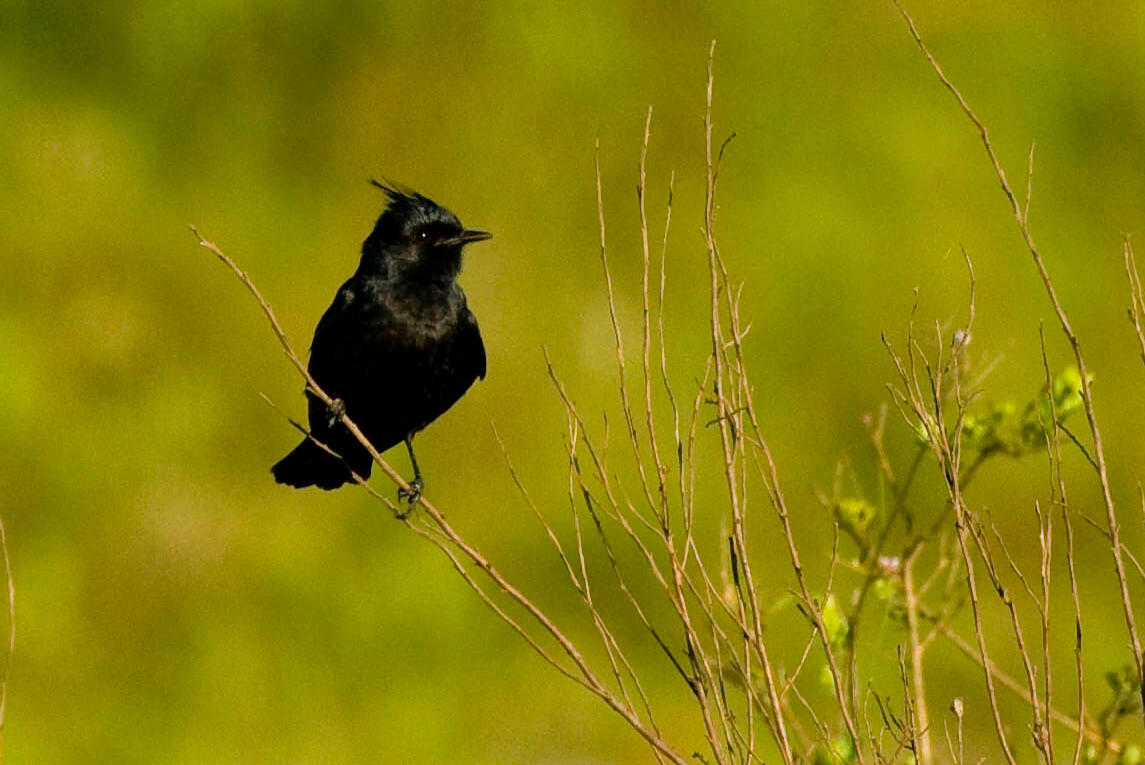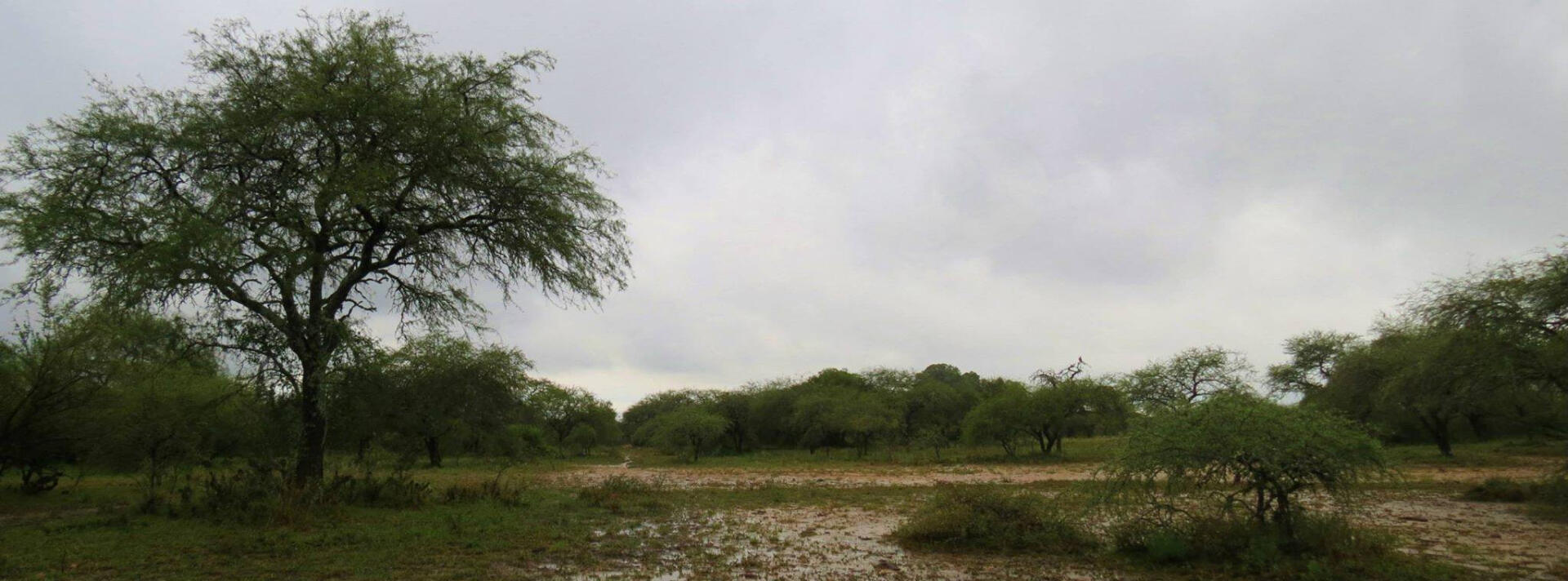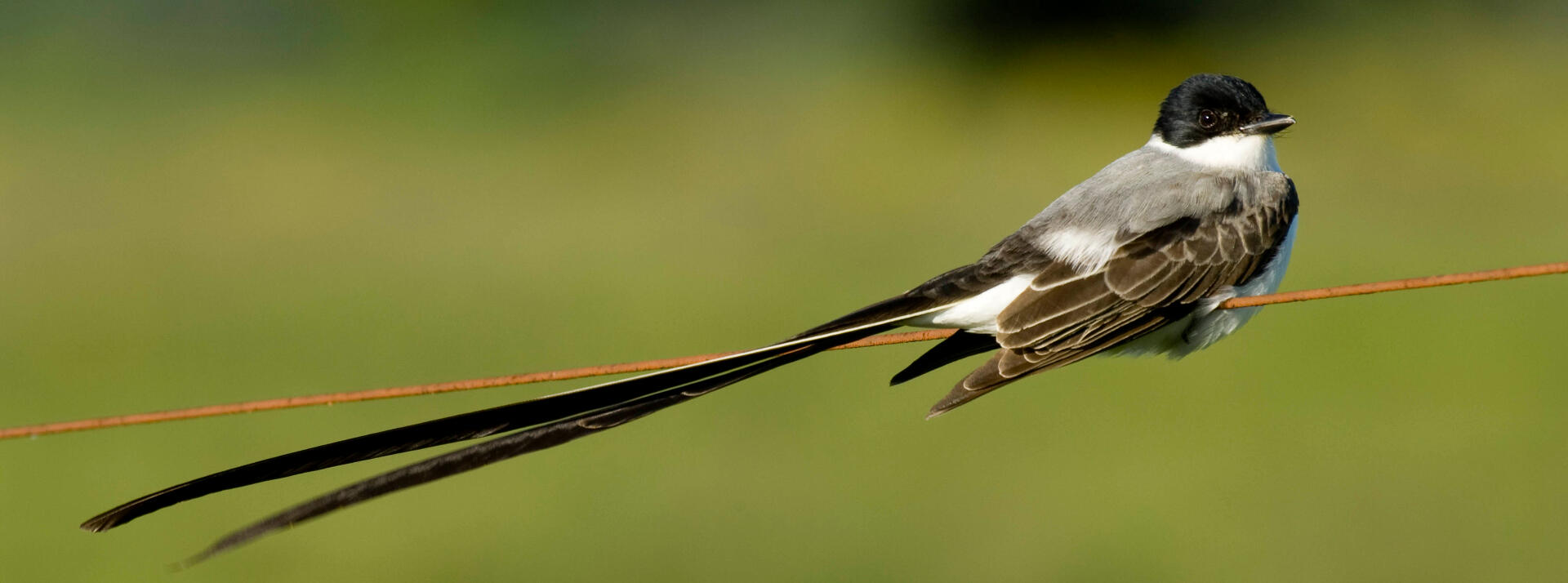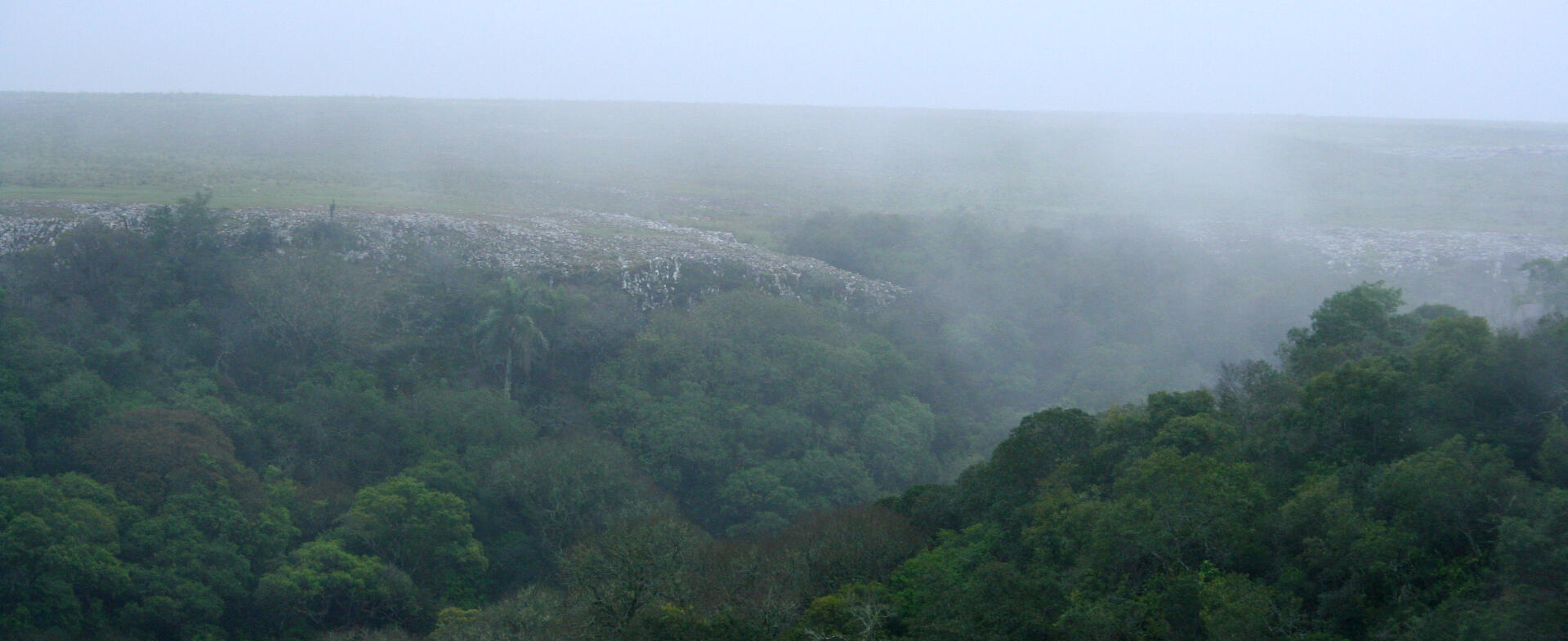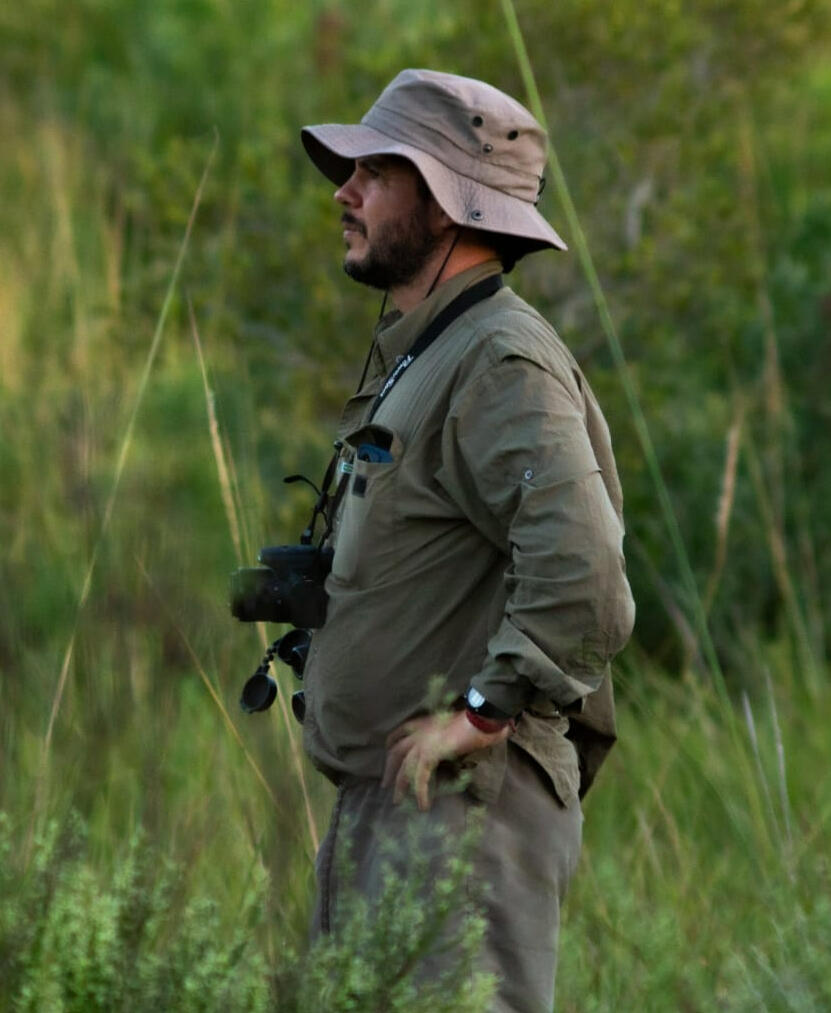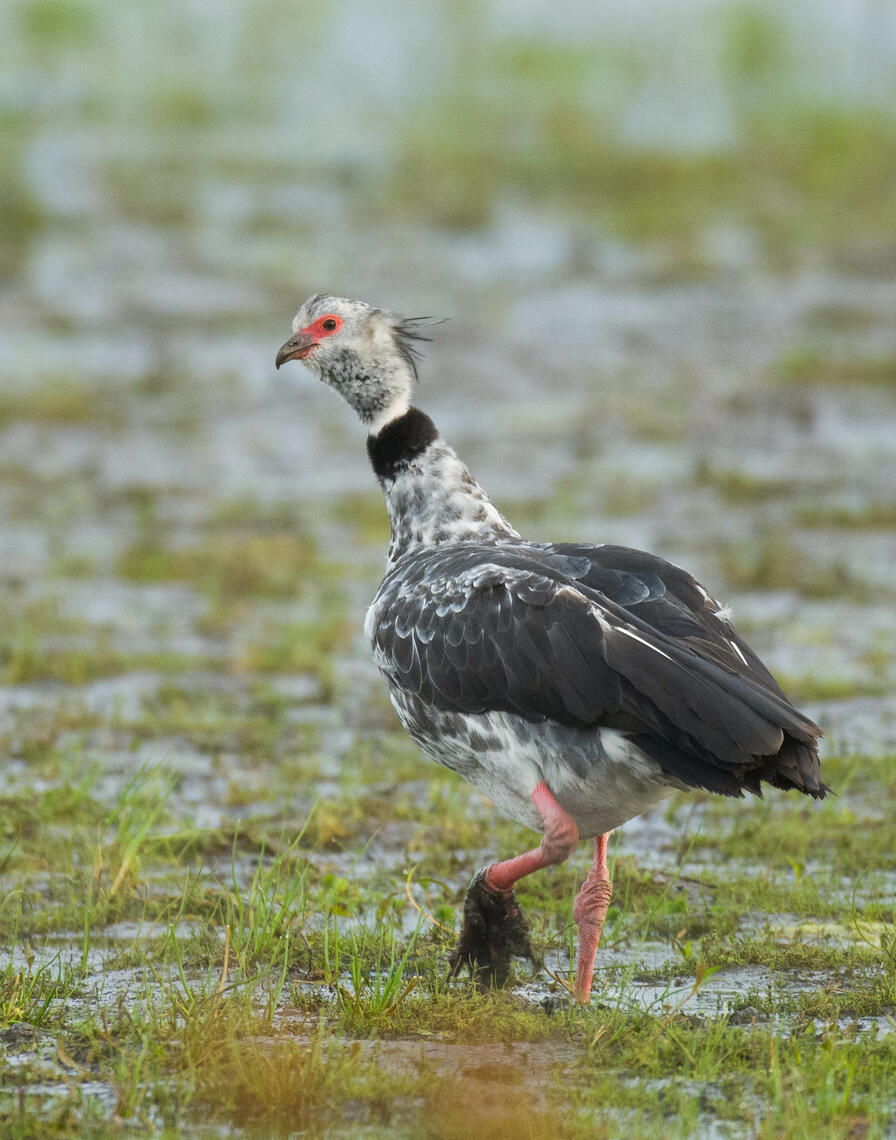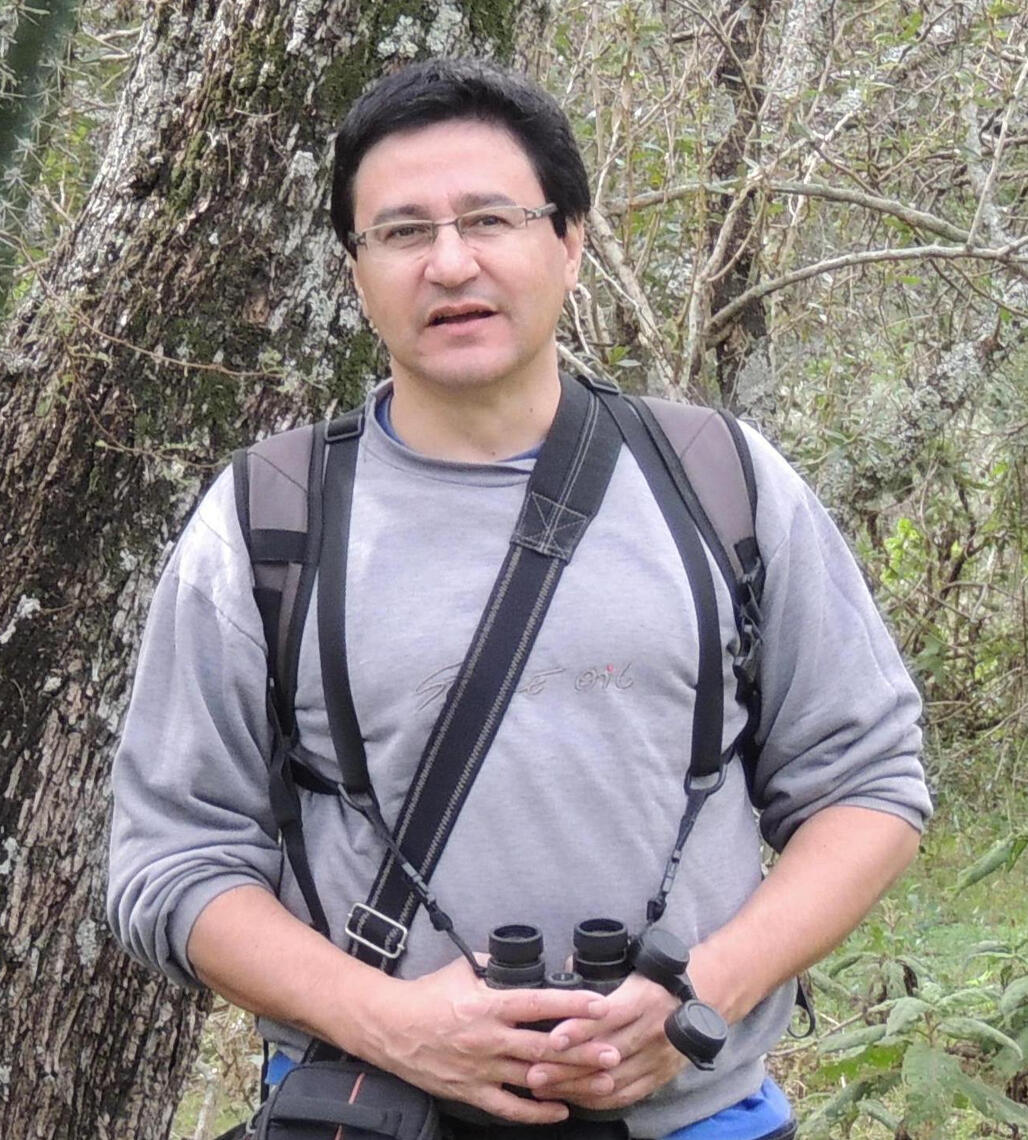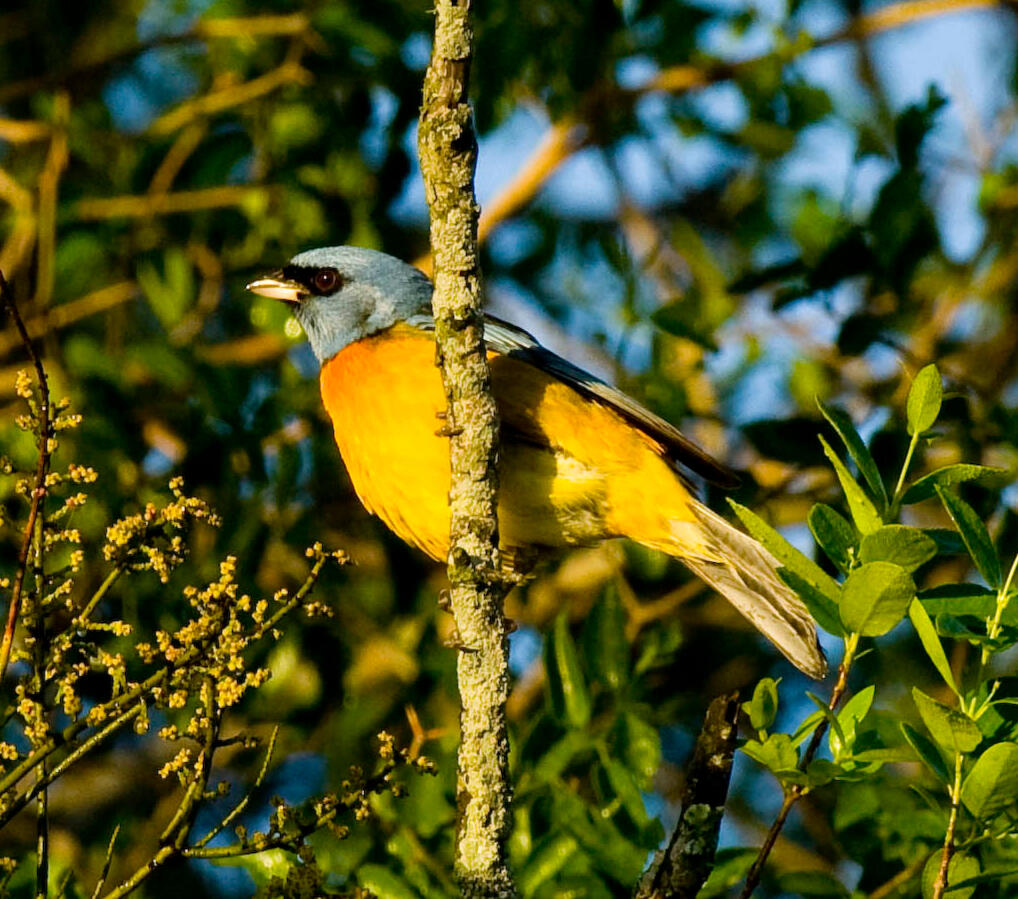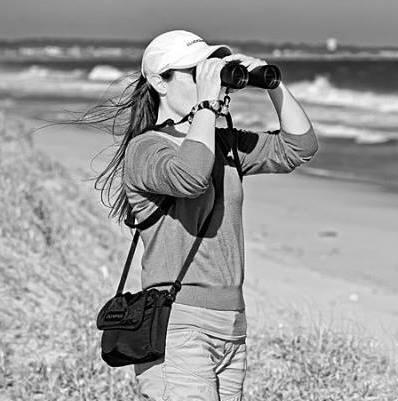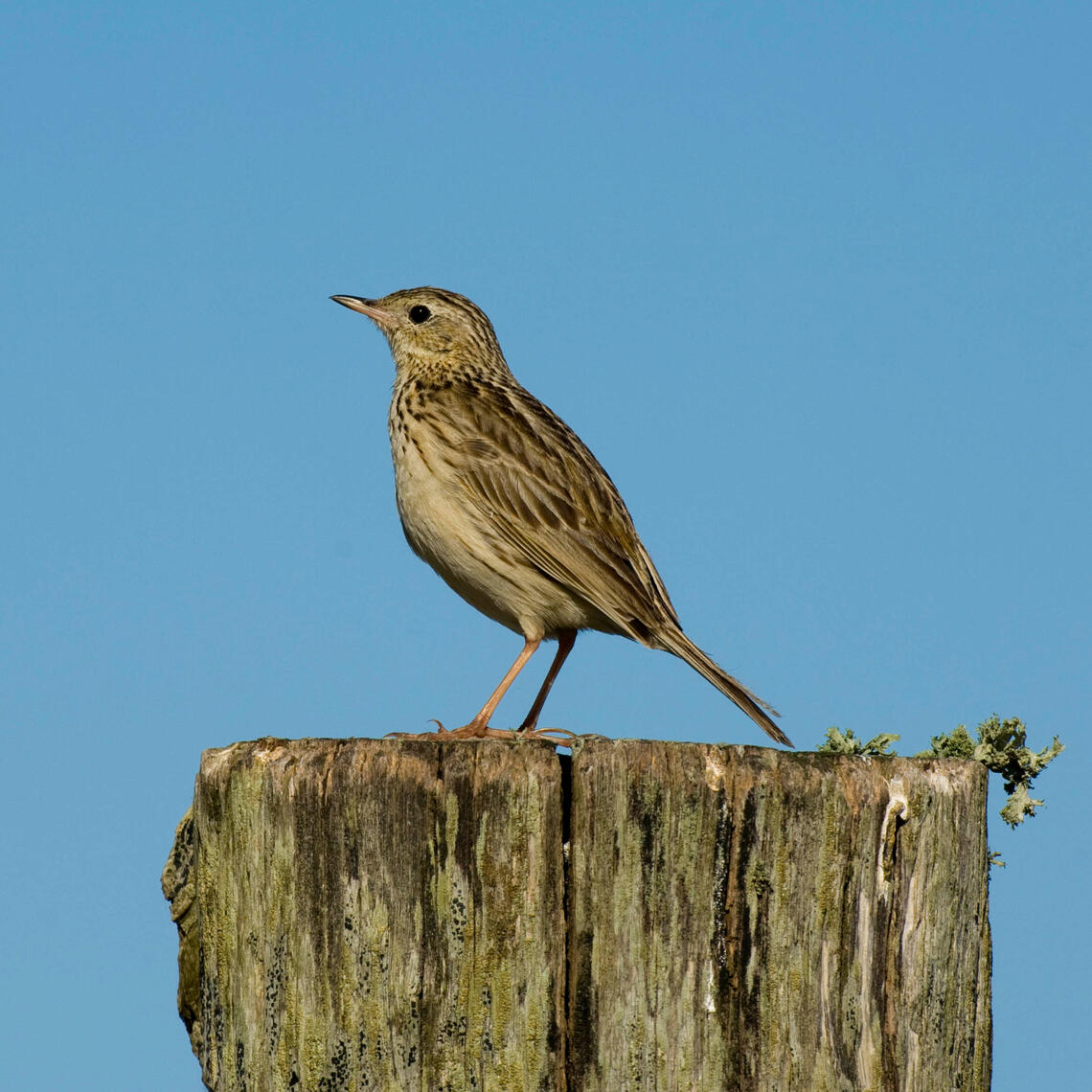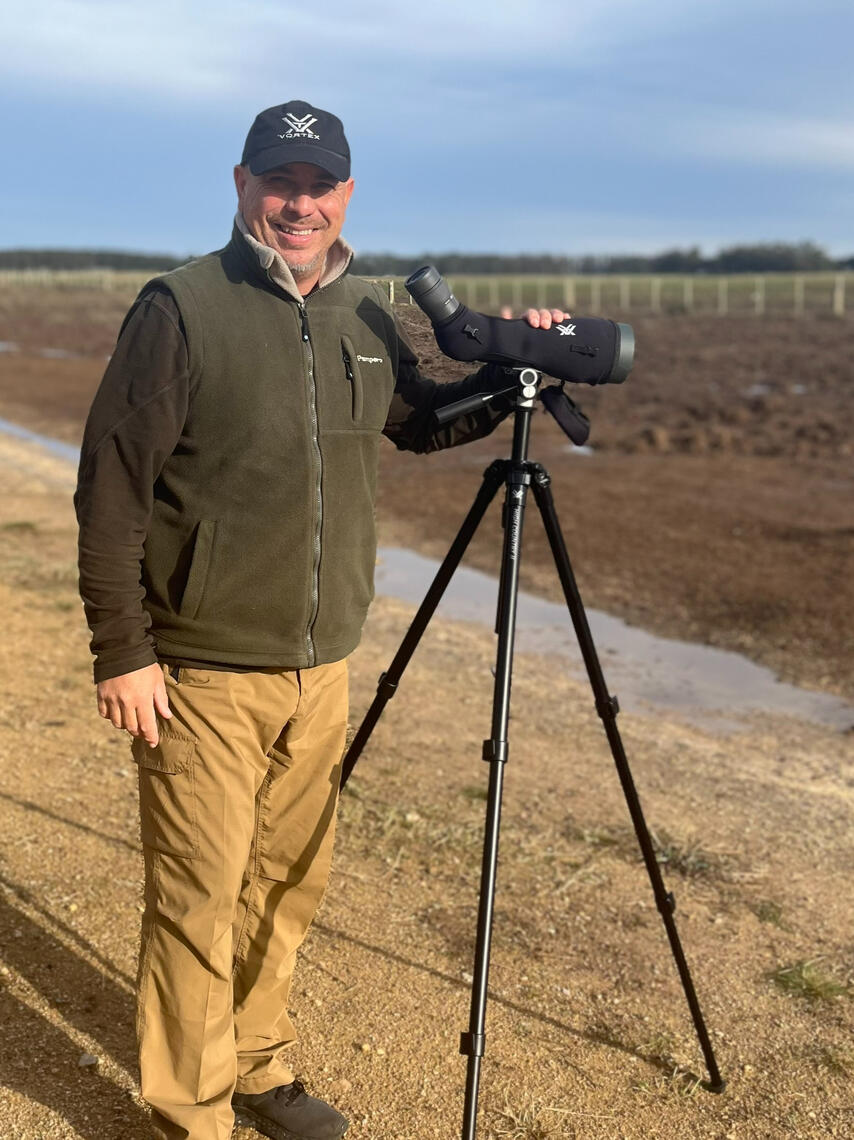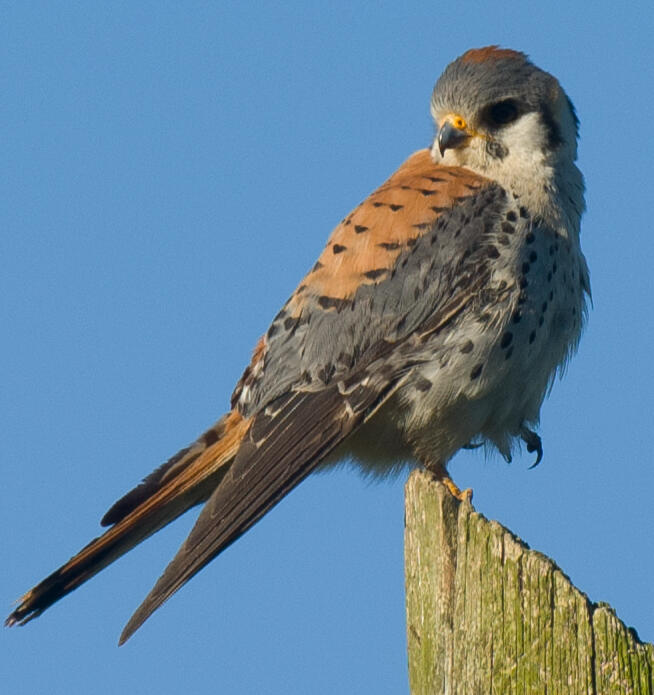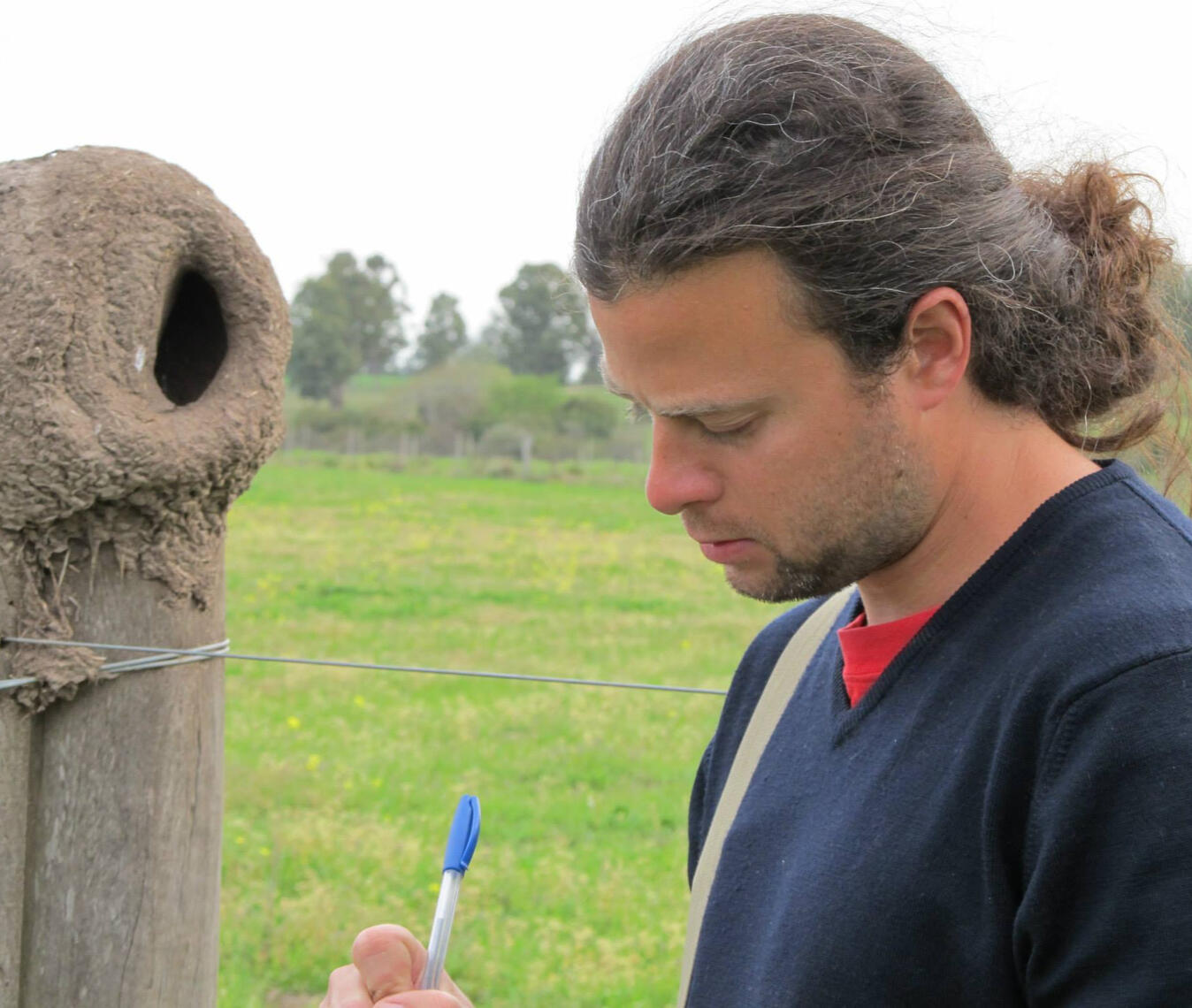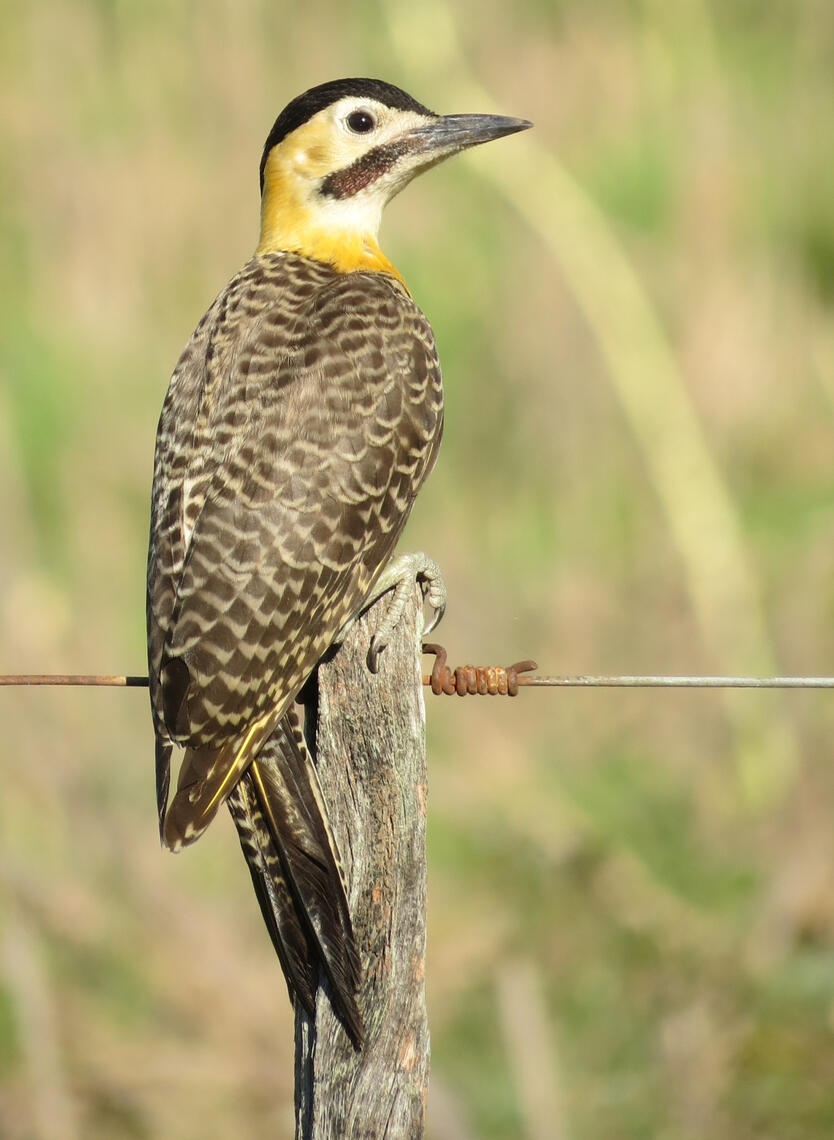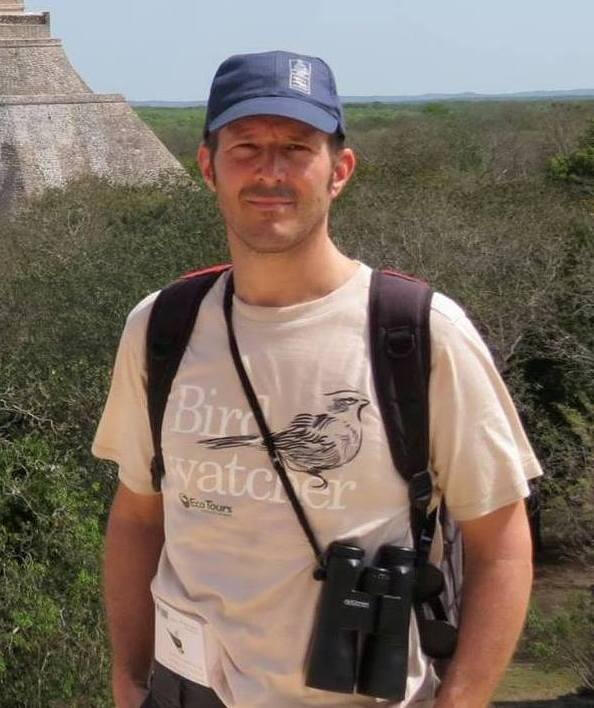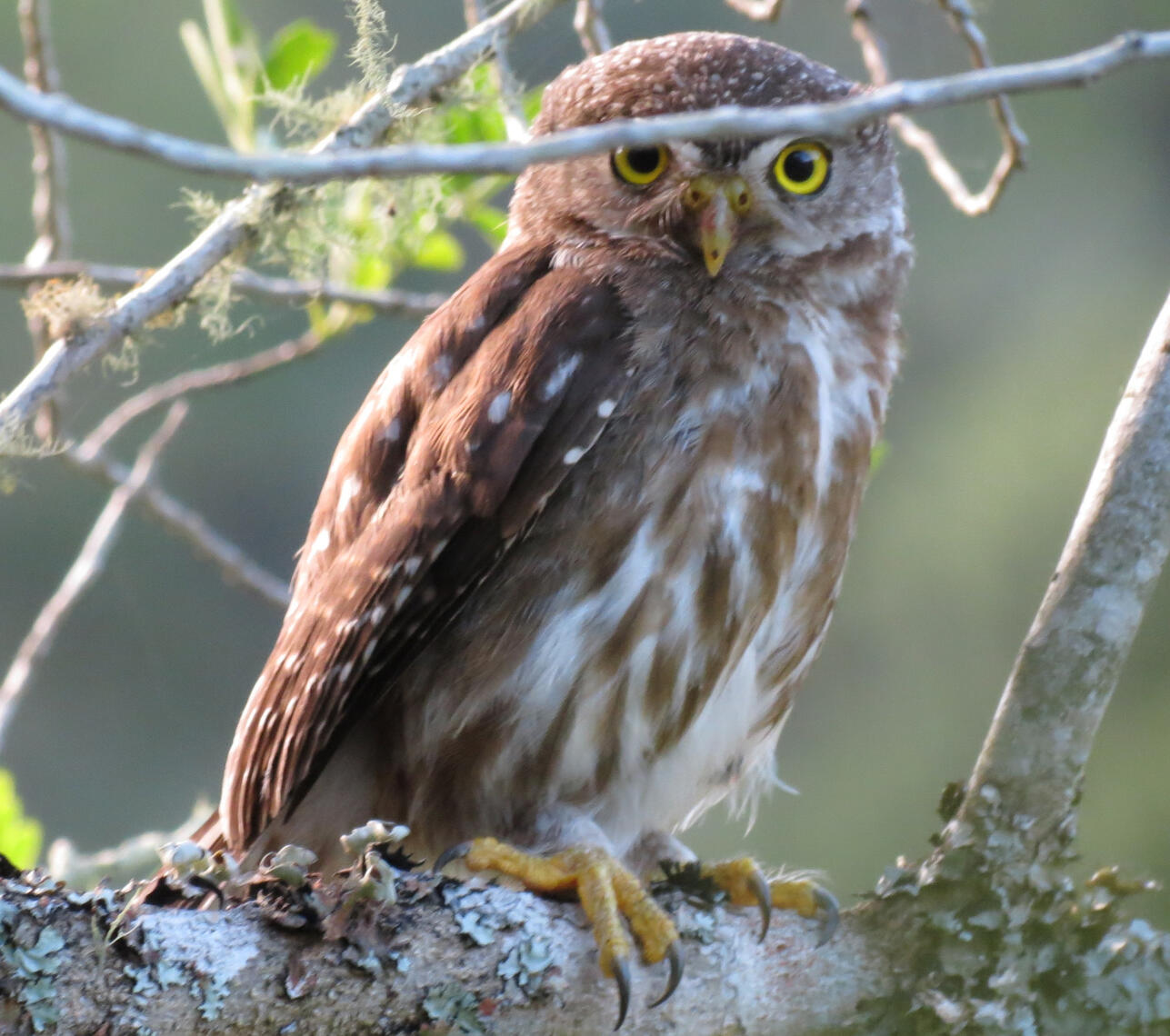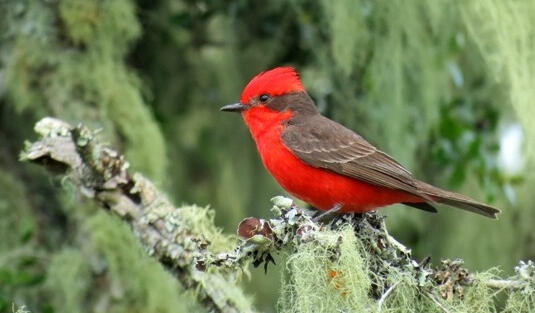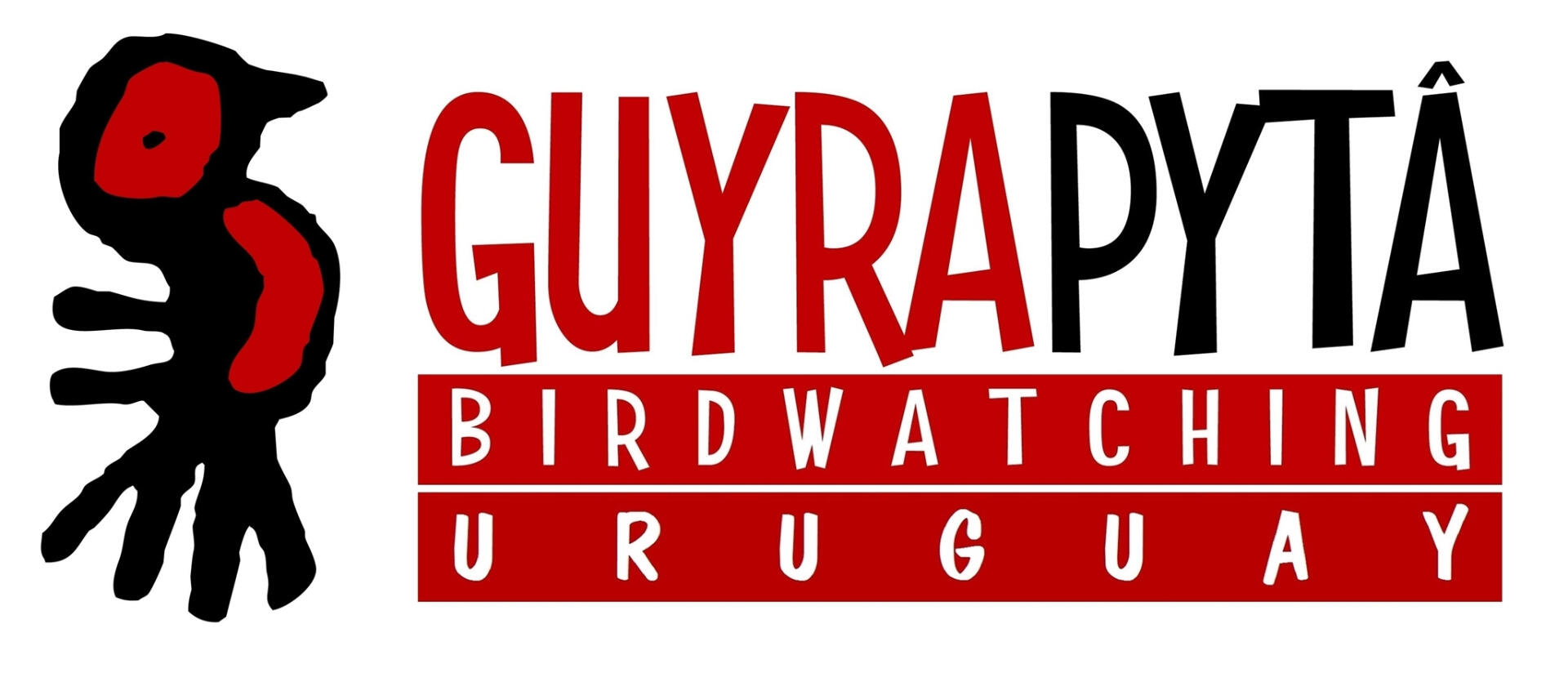
Uruguay, the greatest Pampa’s landscapes in the heart of the Gaucho’s land
About us
Our company specialises in arranging bird watching tours in Uruguay.From our base in Uruguay, gateway to the River Plate Basin, we invite you to enjoy your holidays travelling around and observing the most attractive ecosystems (grassland, native forest, wetlands…) and wild birds in the region.
To that end, we have brought together the finest local ornithologists in our team. They will show you areas which, though rich in biodiversity and surprising landscapes, so far have been little explored by bird enthusiasts.All throughout our work in the field, we promote such values as the respect and recuperation of ecosystems and species, for this reason 1,5% of the total amount of the price of the itineraries is devoted to conservation projects in the visited regions, through the NGO - COENDÚIf you share that passion with us, please get in touch… And enjoy nature! CONTACT US
About Uruguay
Uruguay is a country consisting of vast lush Pampas grasslands, crisscrossed by swamps, lagoons, rivers and streams, sometimes hidden deep in ravines that house thick native forests.
Uruguay’s small size (176,000 km2) is a stark contrast with its bird diversity. There are 485 distinct bird species from 73 different families, of which 67% are permanent resident species. The figure takes on another dimension when compared to other territories in the region: the Uruguayan bird life constitutes 42% of Argentinian and 26% of Brazilian, in an area that accounts for 6% and 2% of the territory of these countries.
Source: Aves del Uruguay - lista e introducción a su biologia y conservación - by Adrian B. Azpiroz
It is impossible to go birding in Uruguay without getting in touch with the traditional Gaucho culture associated to this unique landscape, the extensive stock breeding and freedom that greets you. Most of the lodgings, situated in pristine corners of the country, are family ranches whose main income derives from sustainable stock breeding and ecotourism which are eco-friendly taking into consideration the environment and the native flora and fauna.
WEST MONTEVIDEO
One-day trip. Specially designed for birders who stop to Uruguay for a short time: Starting off at Montevideo City, we will visit an area close to the coastline of Rio de la Plata: Santiago Vázquez Wetlands, Playa Peninos (IBA's site - Important Birds Area), Playa Pascual, Colonia Wilson and farm areas around. The environment includes: Coast, lagoon and rural areas with native forest.
White-faced Ibis, Whistling Heron, Brazilian Duck, Silver Teal, Long-winged Harrier, Giant Wood-Rail, Plumbeous Rail, White-winged Coot, Wattled Jacana, Spectacled Tyrant, Long-tailed Reed-Finch, Great Pampa-Finch, Black-and-rufous Warbling-Finch, Yellow-winged Blackbird. Spotted Tinamou, Striated Heron, Bay-winged Hawk, White-tailed Kite, Chimango Caracara, American Kestrel, White-tipped Dove, Guira Cuckoo, Burrowing Owl, Glittering-bellied Emerald, White-throated Hummingbird, Gilded Sapphire, Green Kingfisher, Amazon Kingfisher, Ringed Kingfisher, Green-barred Woodpecker, Field Flicker, Firewood-Gatherer, Freckle-breasted Thornbird, Rufous-capped
Antshrike, Chicli Spinetail, Straight-billed Reedhaunter, Sulphur-bearded Spinetail, White Monjita, Grey Monjita, White-crested Tyrannulet, Rufous-bellied Thrush, Creamy-bellied Thrush, Rufous-browed Peppershrike, Tropical Parula, Bay-winged Cowbird. Cocoi Heron, Brown-hooded Gull, American Oystercatcher, South American Stilt, Snowy-crowned Tern, Black Skimmer, Yellow-billed Pintail, Collared Plover, Lesser Yellowlegs and others species of shorebirds (southern or northern) depending of the season.
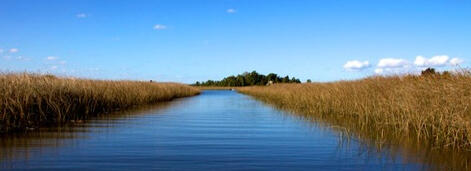
PUNTA DEL ESTE: COAST AND LAGOONS
One-day trip. Specially designed for birders who stop to Uruguay for a short time:
Starting off at Punta del Este, we will travel around the coast in order to watch the birds (IBA's site - Important Birds Area) that inhabit the aquatic and marine environments in that area: Coast, lagoons, bed-reeds, wet pastures and coastal native forest are the mainly environments visited for birding.
Cocoi Heron, Roseate Spoonbill, Brown-hooded Gull, American Oystercatcher, South American Stilt, American Golden Plover, Snowy-crowned Tern, Black Skimmer, Yellow-billed Pintail, Collared Plover, Lesser Yellowlegs, White-rumped Sandpiper, Whistling Heron, Speckled Teal, Grey-necked Wood-rail, White-faced Ibis, Brazilian Duck, Silver Teal, Long-winged Harrier, Giant Wood-Rail, Plumbeous Rail, White-winged Coot, Wattled Jacana, Spectacled Tyrant, Long-tailed Reed-Finch, Great Pampa-Finch, Southern Rough-winged Swallow, Tawny-headed Swallow, Black-and-rufous Warbling-Finch, Yellow-winged Blackbird, Gilded Hummingbird, White-throated Hummingbird, White Woodpecker.
PUNTA DEL ESTE: WET LANDS
==Two-day trip. Specially designed for birders who stop to Uruguay for a short time:== Arriving on Cruiser Ship to Punta Del Este, we will travel around the Protected Area of Laguna de Castillos (IBA's site - Important Birds Area) and Laguna Negra. Both lagoons are surrounded by wet lands, palm groves (Butia odorata) and uplands which altogether make up one of the areas with the highest biodiversity in the region of La Pampa. Accommodation in a country ranch in the midst of the breathtaking setting of Laguna de Castillos.Black-necked Swam, Coscoroba, Silver Teal, White-faced Whistling-duck, Roseate Spoonbill, Snail Kite, Long-winged Harrier, Giant Wood-Rail, Curve-billed Reedhaunter, Straight-billed Reedhunter, Sulphur-bearded Spinetail, Black-and-white Monjita, Spectacled Tyrant, Saffron-cowled Blackbird, Scarlet-Headed Blackbird, Yellow-rumped Marshbird, White-browed Blackbird...
MONTEVIDEO: COAST AND MOUNTAINS
==Two-day trip. Specially designed for birders who stop to Uruguay for a short time:==
Departure and arrival from Montevideo. We will travel up to the east, to the Atlantic coast in order to watch birds related to aquatic and marine environments. In second day we will continue towards the uplands of Cuchilla Grande so as to meet the birds that can be found in mountain and ravine milieus. Accommodation in a country ranch in a splendid mountain setting (summer) or in a hotel in Punta del Este.Least Grebe, White-tufted Grebe, White-necked Heron, Whistling Heron, Plumbeous Ibis, Chilean Flamingo, Black-necked Swam, Coscoroba, Silver Teal, Snail Kite, Long-winged Harrier, Giant Wood-rail, Collared Plover, Greater Yellowlegs, Hudsonian Godwit, Buff-breasted Sandpiper, Black Skimmer, Band-Tailed Gull, South American Tern, Snowy-crowned Tern, Cayenne Tern, Burrowing Owl, Green-barred Woodpecker, Field Flicker, Common Miner, Curve-billed Reedhaunter, Many-coloured Rush-tyrant, Vermillion Flycatcher, Spectacled Tyrant, Short-billed Pipit…
IN PURSUIT OF THE SERIEMA’S SONG
==Placid ten days itinerary through Los Bañados del Este Biosphere Reserve:==
This route involves the most characteristic environment included inside the 200,000-hectare of Los Bañados del Este Biosphere Reserve (RAMSAR and IBA's site): Sierra native forest, coastline, lagoons, estuaries and Palm tree forest (Butia odorata) that are all one of the largest wetlands in the Southern Cone. It is home of some vulnerable and endangered bird species like Black-and-white Monjita, Saffron-cowled Blackbird and Marsh Seedeater and other interesting species like Rusty-collared Seedeater, Curve-billed Reedhaunter, Straight-billed Reedhunter, Bay-capped Wren Spinetail, Red-ledgged Seriema, Southern Screamer and more than ten ducks and swans, etc.
BIRDING URUGUAY - FULL TOUR
==Twelve days itinerary around all the Uruguayan territory:==
This is a circular itinerary around all the Uruguayan territory in search of some of the birds restricted to the Pampas biome - Pampa endemics -. Curve-billed Reedhunter, Bay-capped Wren-Spinetail, Sulphur-throated Spinetail, Chestnut and Marsh Seedeater, and many other species. We will departure from Montevideo towards the Atlantic coast and the far north which is the wildest and pristine Uruguay, and to the west, to the Uruguay river shore. We will enjoy the genuine gaucho’s land that is made for beautiful landscape of wet ravines and sierras forest, park-like woodlands, grassland, wetlands and tiny lagoons that lies next to the sea.
NORTH RAVINES AND THE BANKS OF THE URUGUAY RIVER
==Five days Itinerary around the west part of the country:==
This itinerary runs across the far north of Uruguay, the wildest and pristine Uruguay, the genuine gaucho’s land that is made for a beautiful landscape of wet ravines and sierras-grassland. The west banks of the Uruguay River is an interesting mixture of wet grassland, small lagoons, river forest and park-like forest called Algarrobal (Esteros de Farrapos protected area and IBA's site) which is an extension of the Chaco sited inland of the continent.Greater Rhea, Red-winged Tinamou, Buff-necked Ibis, Yellow-headed Caracara, Red-legged Seriema, Savanna Hawk, Bicolored Hawk, Rusted-collared Seedeater, Vermillion Flycatcher, White-eyed Parakeet, Mottled Piculed, Blue-tufted Starthroat, Scimitar-billed Woodcreeper, Striped-crowned Spinetail, Lark-like Brushrunner, Brown Cachalote, Tufteed Tit-spinetail, Short-billed Canastero, Crested Black-Tyrant Rufous-browed Peppershrike, Chestnut-backed Tanager, Diademed Tanager, Green-winged Saltator, low Tanager, Hepatic Tanager, Glaucous-blue Grosbeak, White-rimmed Warbler...
.
Gastón studied Biological Sciences and he has a Master´s Degree in Zoology. His love for birds began when he was working at Lecocq Park (a natural park in the west of Montevideo) as an intern before ending his career. He has participated in several events, congress and conferences related to Ornithology by showing the general context of Birdwatching in Uruguay. Gastón was present in the last Birds South American Fair in the Province of Corrientes, Argentina (October, 2024) giving a conference about Birding representing Uruguay. He also has worked for different environmental consulting firms carrying out birds monitoring and environmental impact studies in Wind Farms in Uruguay. He is currently working as a Birdwatching Guide with both local and foreign birders.
.
Adrián has a degree in biological sciences, and worked with the Vertebrate Zoology Department of Uruguay’s Universidad de la Republica for fifteen years, as well as being a member of Aves de Uruguay – an affiliate organisation of BirdLife International. He is fully acquainted with the bird life of the region, having taken part in several expeditions and coordinated various research projects in a number of zones of South America’s Southern Cone, and also in Oceania, Hawaii and South Africa. His preferences focus chiefly on marshland, coastal and marine birds. He is interested by birds’ interactions with natural habitat and generally any wildlife expression from natural ecosystems.
.
From an early age, my parents taught me to love and value every form of life. They awoke in me, by means of tours and beautiful landscapes, a passion for wildlife that persists today. When I was 17 I started birding motivated by birds' conservation issues and a few years later I began my career in Biological Sciences, what led me to research on birds.
Following on from all of this experience, I decided to share my passion for birds as a birding guide, which I have been undertaking for more than 10 years. My goal is to show our amazing native birds in a special way, in which the visitor can be enriched by our culture and traditions, as well as enjoy the most pristine landscapes I fell in love with in my dearest Uruguay.
.
Gonzalo is an Ecotourism Technician, nature guide, specialized in conservation and management of natural areas. Living his entire life on the coast, his passion for birds and nature began at a very young age. He worked as a guide in the Cabo Polonio National Park and as a park ranger in the Indigenous Municipal Park located in the Esteros del Arroyo Maldonado.
For 20 years he has worked as a birding guide and designer of tourist circuits. Gonzalo is the representative of Uruguay in the International Committee of the South American Bird Fair and has given conferences in several south American countries. He is co-founder of the Punta del Este Bird Watchers Club, where he has participated in several environmental education and scientific projects.
.
Rafael studied Biological Sciences and has completed a Master´s Degree in Zoology. His love of birds began in University, when he joined the NGO Averaves, a group of ornithology-oriented students. He has taken part in several research projects around the country, mainly working on bird diversity, he loves the outdoors and has many hours of field experience. His background includes carrying out environmental impact assessments for wind farms, research on bird and mammal responses to different land uses, reproductive biology of some native bird species, several wildlife surveys, and even paleontological excavations. Rafa is bilingual and speaks native-level English as a result of having lived in Canada as a child. Today he resides in the city of Colonia del Sacramento in Uruguay.
.
Enric is a Catalan who is deeply passionate about birds. He has been driven by the curiosity he feels for creatures of all kinds ever since he was a child, a trait that led to his career choice: he is a vet. He has gone on birdwatching trips as a tourist on many occasions, taking him to various countries across four continents. Over the last five years, he has frequently travelled around Uruguay and Argentina, and has thus become acquainted with the bird life of the River Plate basin. He also set up this entrepreneurial venture, working in cooperation with professionals and enthusiasts from the region. He is a member of the Catalan ornithology organisation ICO (Institut Català d’Orinitologia) and a partner in Birdlife International.
Contact Us
GUYRAPYTA BIRDWATCHING URUGUAY
+598 98 644 509 / +34 639 333 831
[email protected] / [email protected]
Montevideo, Uruguay
If you wish to make a reservation for a tour, please complete:
THE LEGEND OF THE GUYRAPYTÂ
Vermilion Flycatcher (Pyrocephalus rubinus) is called Guyrapytâ in Guarani language which means Bird of fire or red bird... That’s obvious!Native legends talk about the Bird of Fire as the heart of a brave local native warrior living in the patches of Pampa’s forest, taking care of the wildlife, the land and the freedom of his people. For that reason, this bird is a symbol which embodies values of freedom, respect and protection.Vermilion Flycatcher was chosen as name and logo of our bird watching company since the beginning.We specially love this bird!
